Timeline Nicaragua: Eight Months of Civic Rebellion
Nicaraguans are experiencing one of the worst crises in many years. Confidencial and its Niu magazine summarizes the chief occurrences of 2018 in the Central American country.
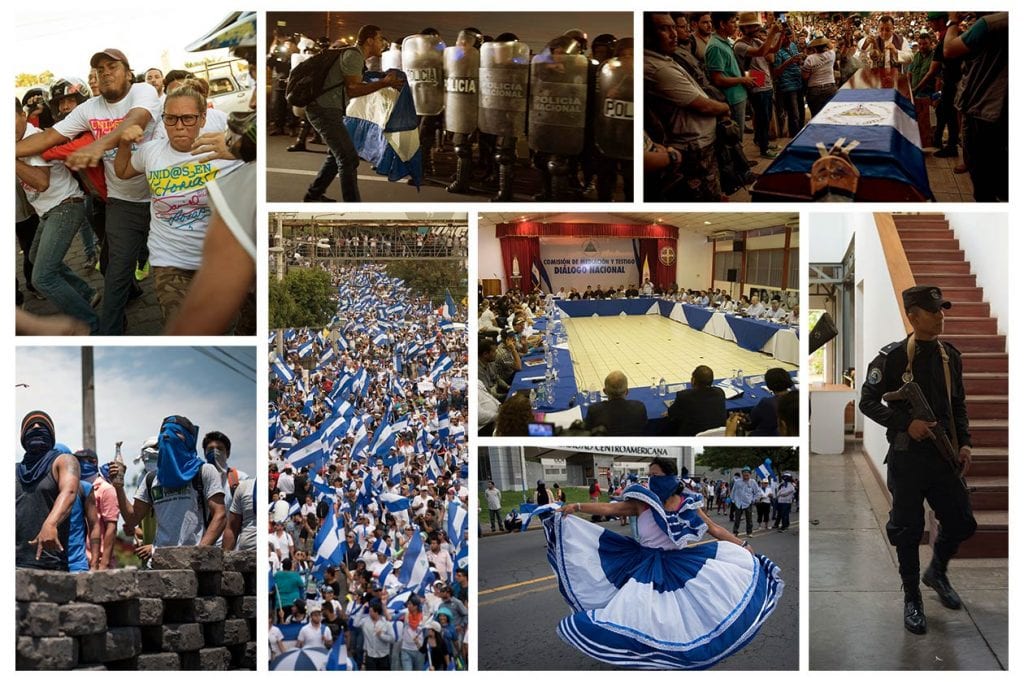
HAVANA TIMES – The protests that began in April represent the largest uprising that has occurred during the rule of dictator Daniel Ortega.
Government repression provoked the death of at least 325 people, according to the Inter-American Commission for Human Rights. Up to the present, the government has jailed more than 500 people and triggered a massive wave of emigration from Nicaragua, the fourth such wave over the last fifty years. Fallout from the government’s handling of the protests has led the country’s economy to shrink, and the negative growth is projected to worsen with the recent US sanctions against the regime.
The following are the events of greatest impact, from April through December of 2018:
April
Protests over delays in combatting the forest fire in the Indio Maiz biological reserve
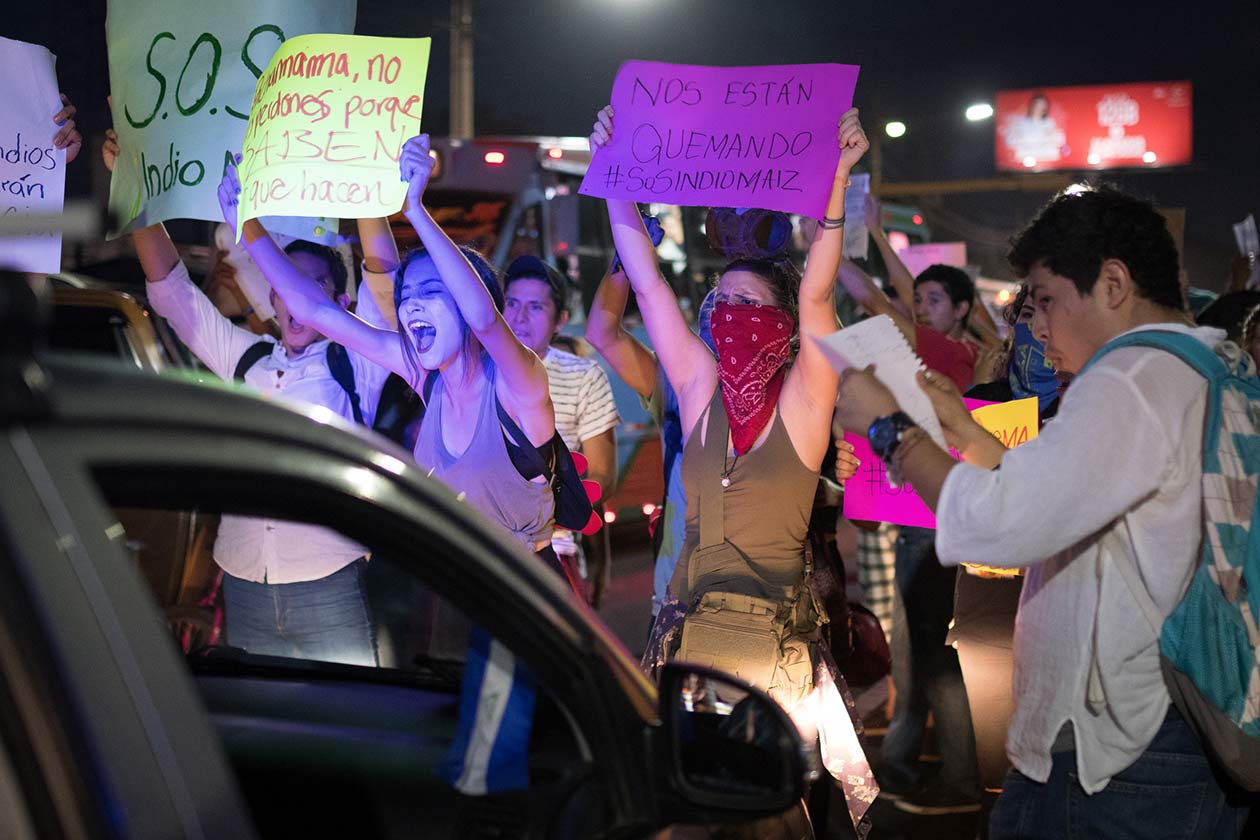
The huge forest fire in the Indio Maiz reserve began on April 3, 2018. Environmentalist Jaime Incer Barquero characterized it as “the worst ecological catastrophe of the century,” since it consumed over three thousand hectares of tropical rain forest because the government didn’t attend to it in time. Upon seeing that the official response was to minimize it, the university students began the first protests, chanting: “Sir, madam, don’t ignore our cries, Indio Maiz is burning, right before our eyes. [“Señor, señora no sea indiferente, se quema Indio Maíz en la cara de la gente”]
April rebellion begins with protests against Social Security reforms
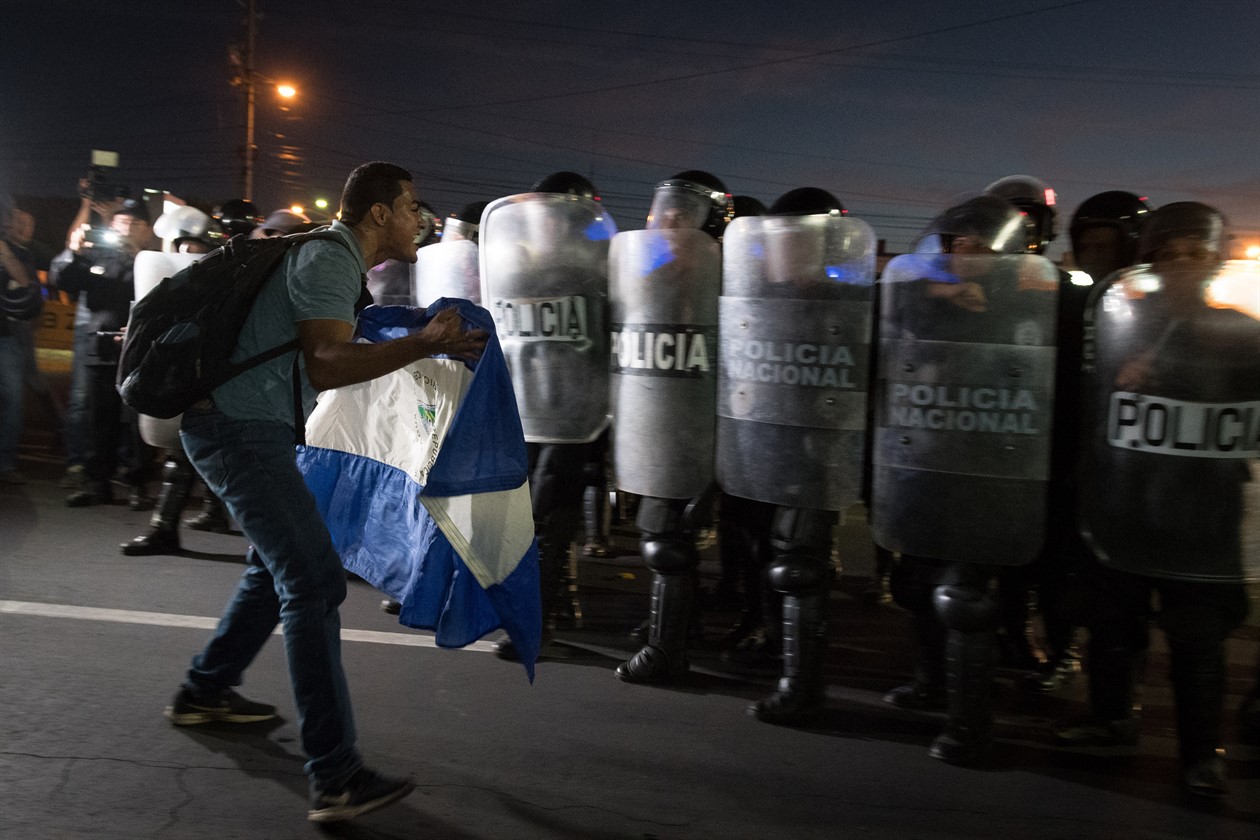
On April 18, the government of Daniel Ortega announced a series of unpopular reforms to Social Security. That same day, a group including many retired people came out to protest in Leon and were beaten up by mobs allied with the Ortega government. That same night, the Ortega mobs attacked and robbed journalists, students and elders who came out to protest in Managua. Students from the Engineering University and the Polytechnic Universities then occupied their campuses in protest.
On April 19th the government ordered the riot police to take back control of the streets and the universities. Within the context of these protests, the first three people were shot and killed.
Ortega se retracta de las reformas al Seguro Social

In an attempt to calm the uprising that was rapidly spreading across the country, Daniel Ortega announced in a national broadcast on April 22 that they were repealing the reforms to Social Security. By that time, however, more than 30 people had died during police attacks on civilian protesters. The deaths included the assassination of journalist Angel Gahona while he was live on-line, reporting on the protests in Bluefields on the Atlantic Coast of Nicaragua, and that of Alvaro Conrado, who at 15 was the first young teen to die in the protests.
The first massive march
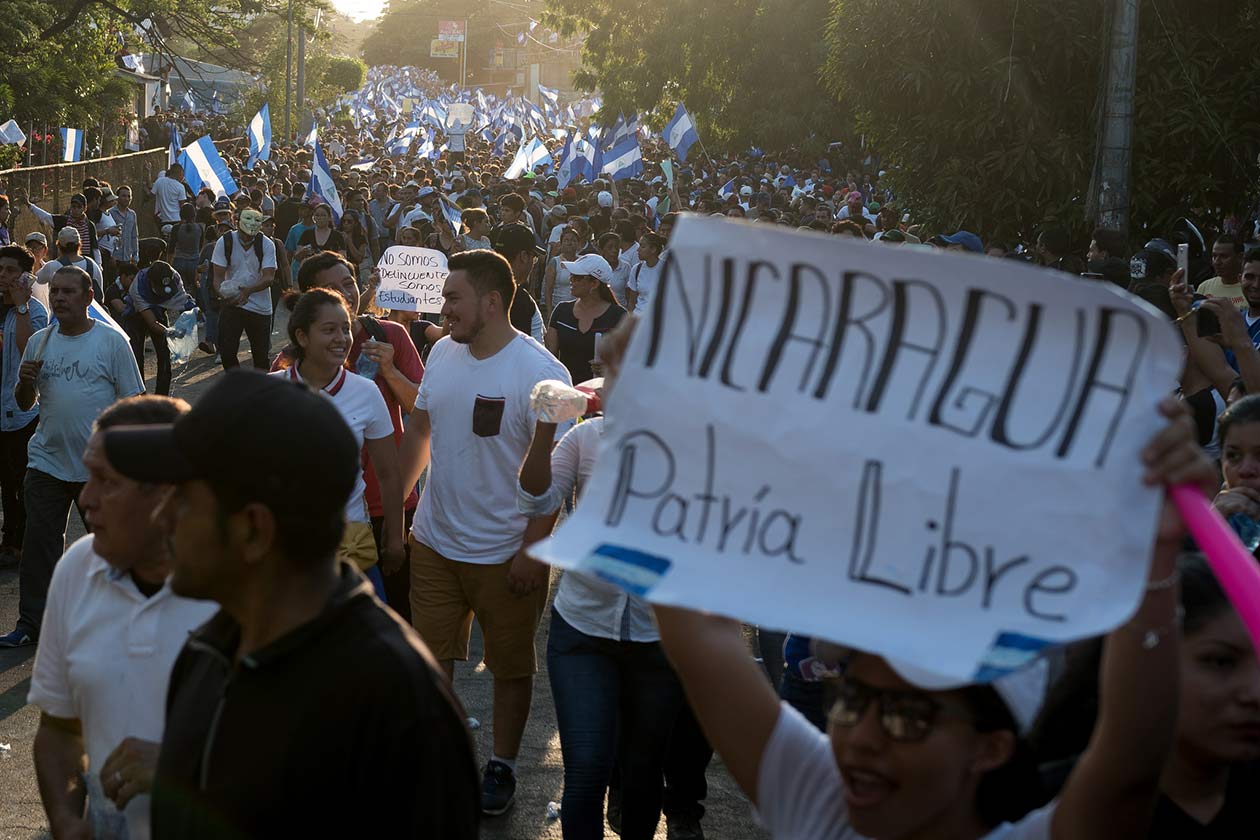
On April 23, the first large anti-government demonstration since Ortega’s return to power in 2007 was held in Managua. By this time, the protests were no longer about Social Security: the demonstrators took to the streets demanding an end to Ortega’s rule. That march was also proof that the relationship that Ortega had maintained with large private business had been severed. The route of the march was from the Metrocentro roundabout to the gates of the Polytechnic University where the students were occupying the facilities.
May
Roadblocks and barricades go up
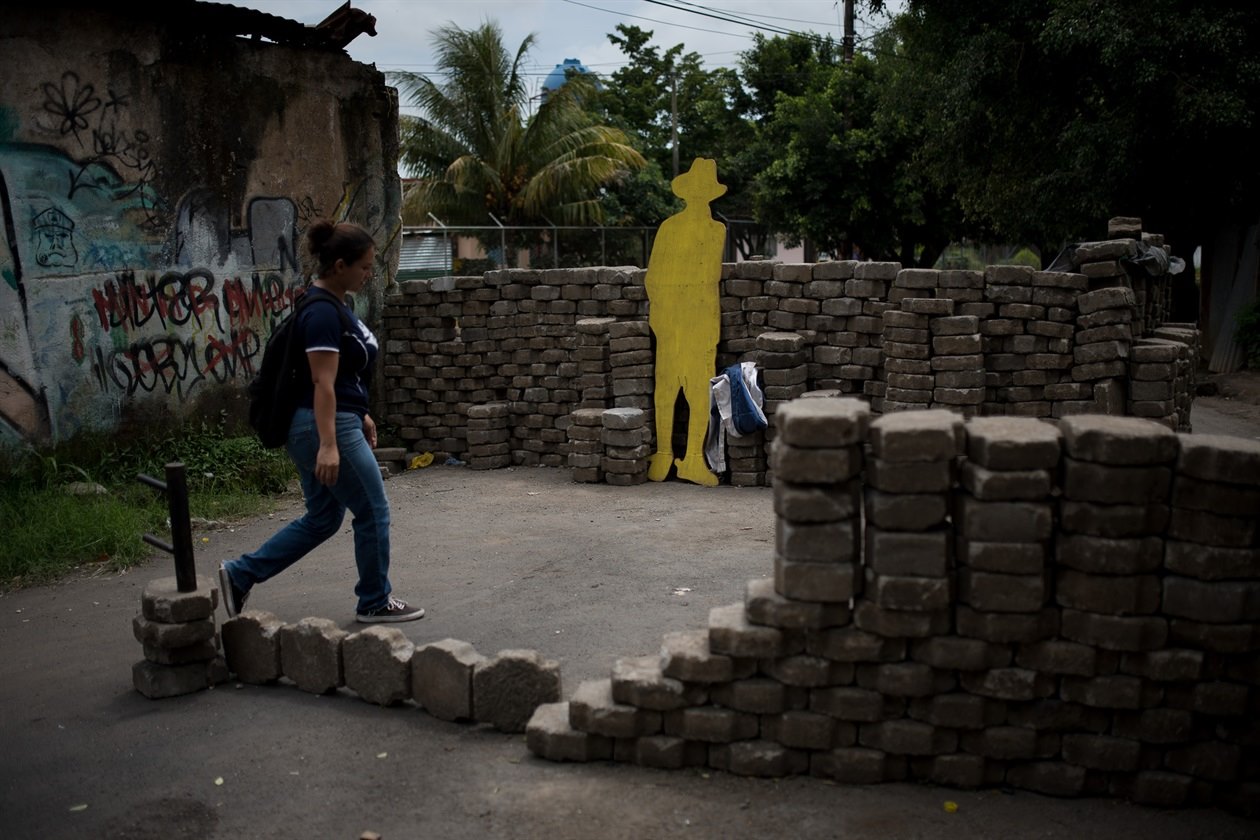
In the face of continued attacks from the police and paramilitary, the population – calling themselves the “self-organized” movement to emphasize their independence from existing political parties – began to put up barricades and roadblocks in cities and departments across the country. The police made several attempts to take these down, with no success. However, during these attacks on the barricades the number of deaths began to climb dramatically. In the first weeks of May there were also taxi strikes in Managua, Ciudad Sandino, Carazo and Rivas.
National Dialogue inaugurated
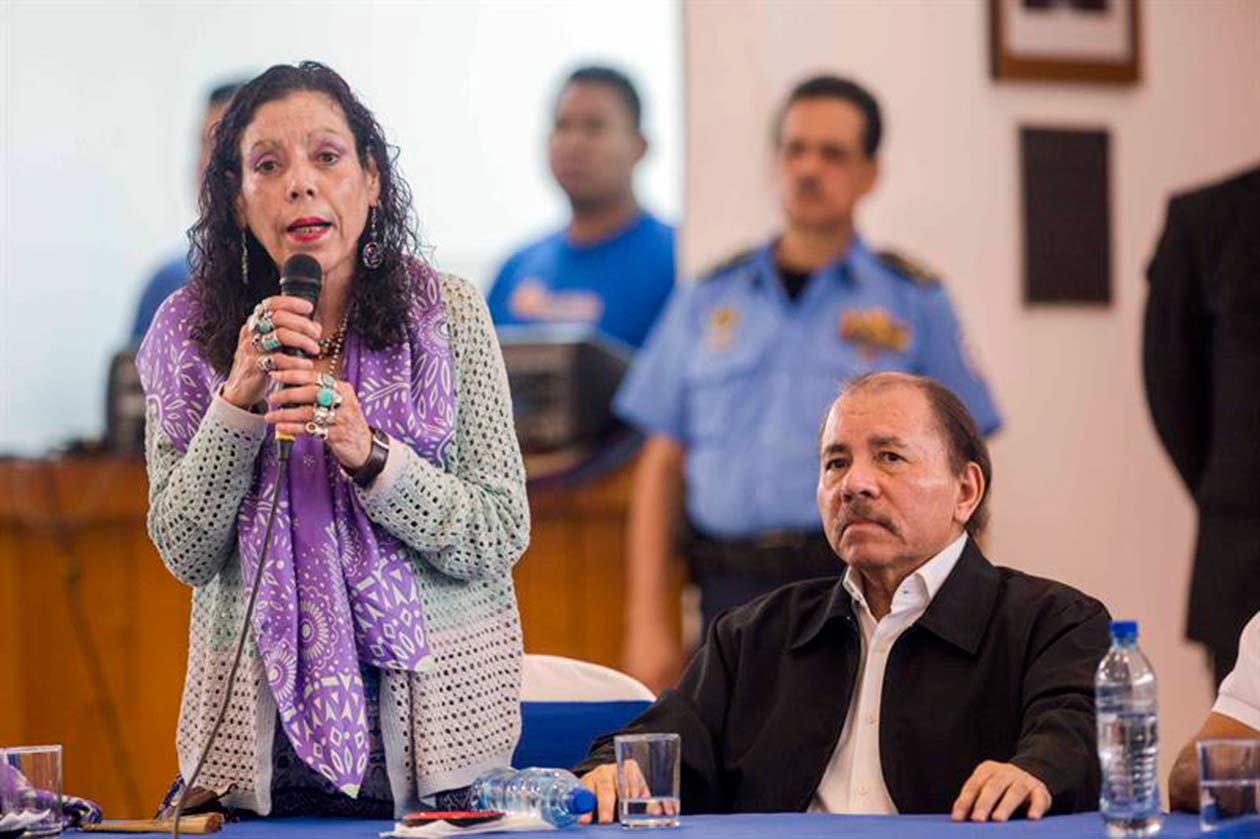
On May 16, following three weeks of protests and more than 50 deaths, Daniel Ortega agreed to enter into a National Dialogue with the members of civil society proposed by the Catholic Church leaders from the Nicaraguan Episcopal Council. At the opening session, which Ortega attended personally and which was broadcast live on national television, the students confronted him and read him the list of the dead, insisting that the only solution was that of negotiating the departure of Ortega and a cessation of police attacks on the demonstrators. For their part, the government insisted that the roadblocks that had been put up in many parts of the country must be cleared before any other issues could be taken up.
Ortega allows the Inter-American Commission for Human Rights into the country
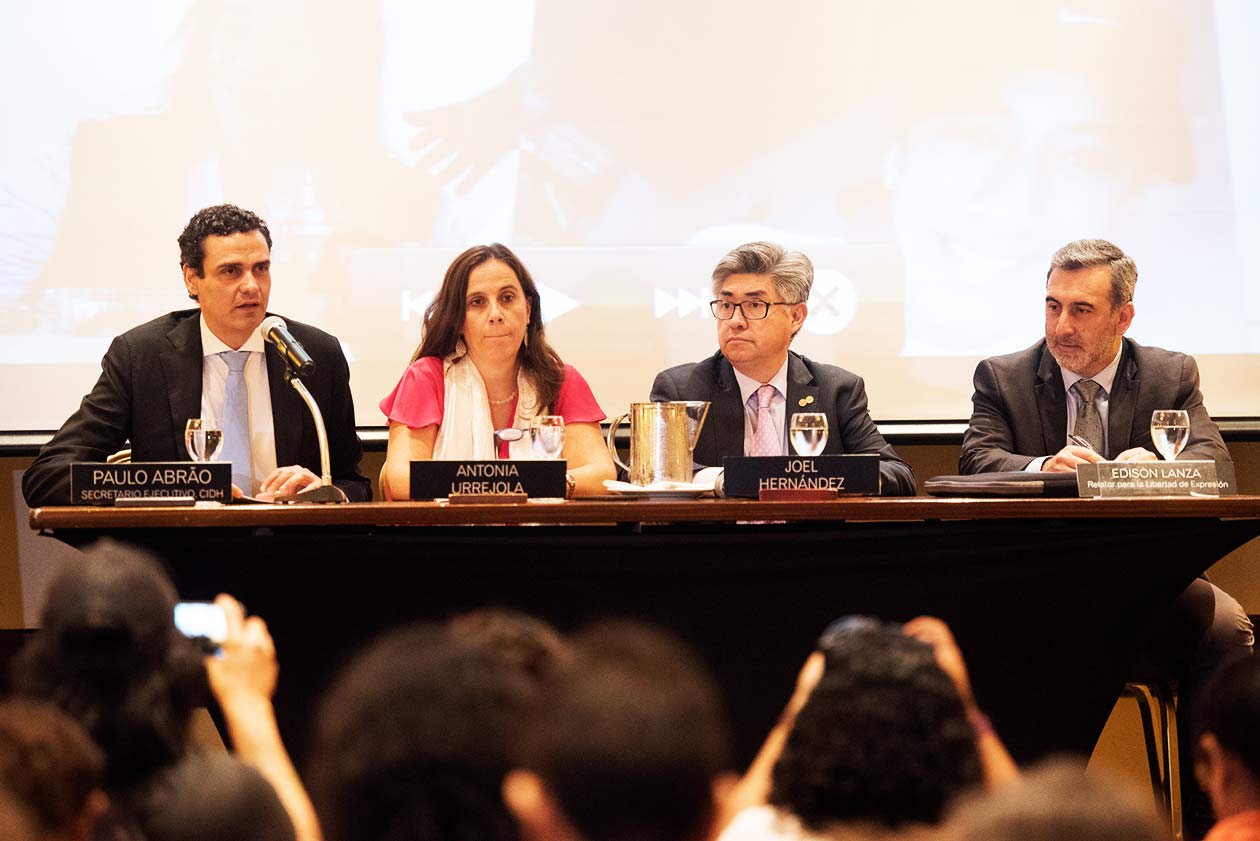
After pressure from several sides, the Ortega government allowed the Inter-American Commission for Human Rights (IACHR) into the country. Representatives of this organization arrived in the country on May 17, one day after the National Dialogue began. Weeks later, Ortega recognized to this body the death of 76 people between April 18 and May 22.
Grief and mourning on Mothers’ Day
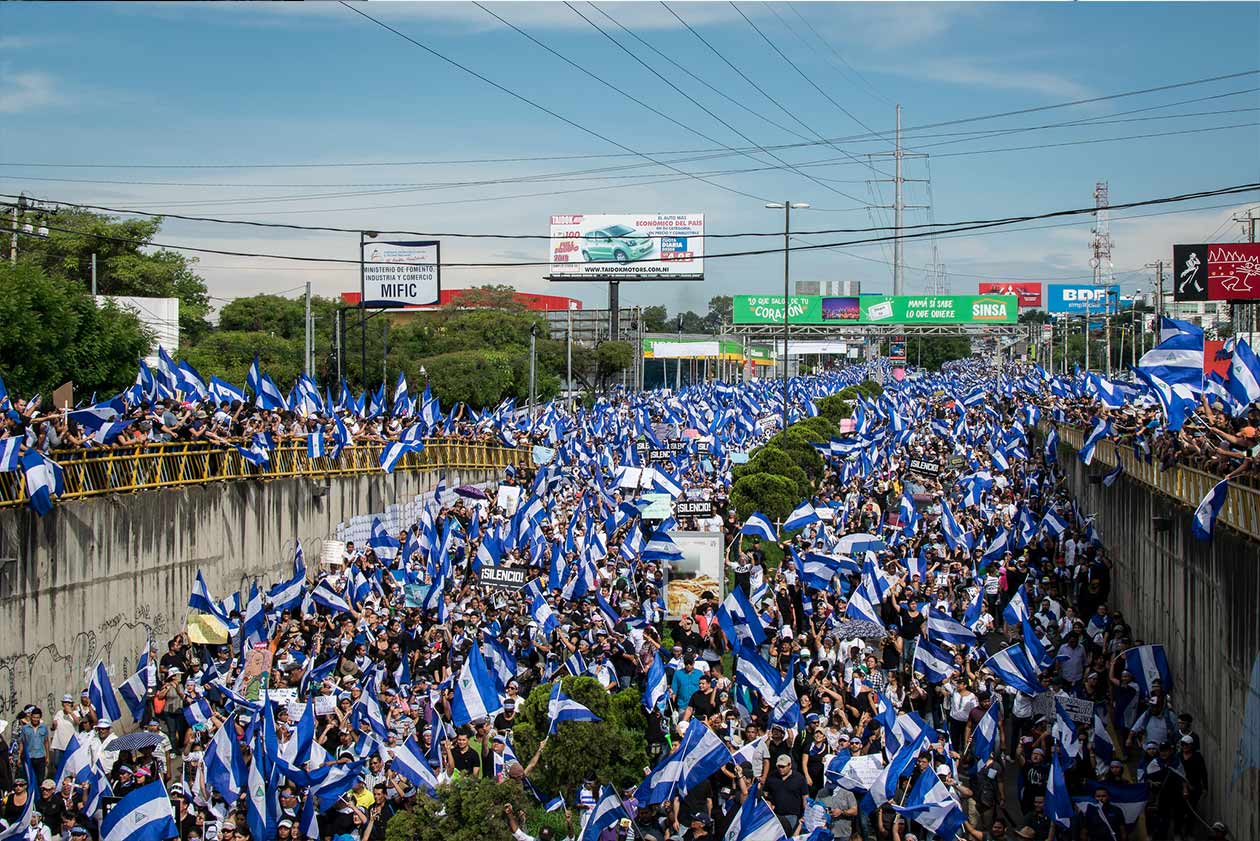
Thousands of Nicaraguans marched on May 30, Nicaraguan mothers’ day, together with the mothers of the youth who had been killed by the Police during the protests. The march was baptized as “the mother of all marches”. However, near its conclusion, riot police who had taken up posts in the National Stadium attacked the march, causing the death of another eight people, among them teenager Orlando Cordoba who was marching with his mother that day. Some 5,000 people had to take refuge in the Central American University, which opened its doors to the fleeing demonstrators. All of this occurred while Daniel Ortega was meeting with his supporters at the Hugo Chavez roundabout.
June
Masaya attacked and religious leaders step in
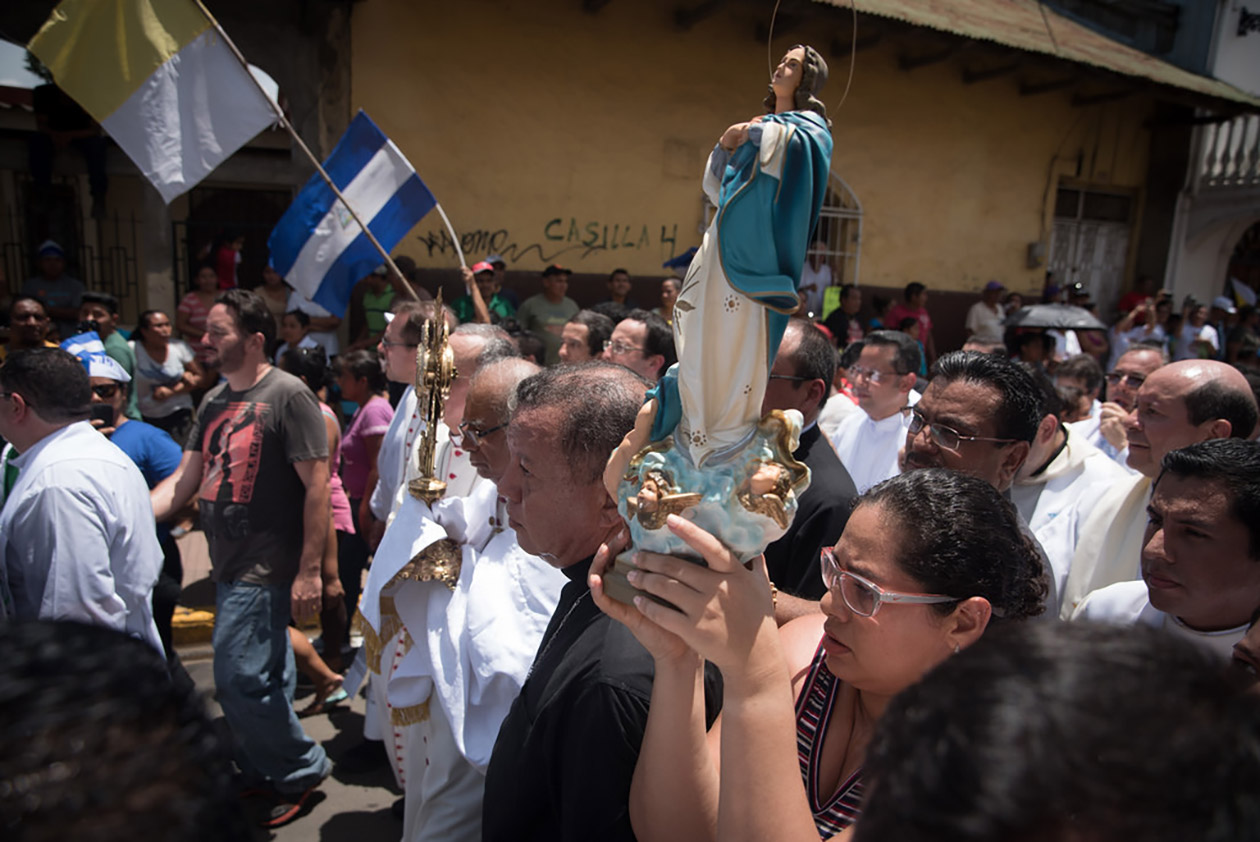
On June 2nd, Daniel Ortega’s regime attacked Masaya, which was barricaded off and in near-full rebellion. Junior Gaitan, 15, was one of six people killed in the city that day, shot at close range by an official while he pleaded for his life. Paulo Abrao, secretary of the Inter-American Commission for Human Rights, declared that the violence in Nicaragua had scaled upwards, along with the appearance of “new repressive practices” that had not been previously documented. “There’s an upsurge in violence. When we left the country (on May 22) we had confirmed 76 deaths and there are now 127 and over a thousand wounded,” Abrao reported at that moment.
On June 21, Cardinal Leopoldo Brenes, Monsenor Silvio Baez and Waldemar Stanislaw, the new Apostolic Nuncio, together with priests from the Managua Archdiocese, set out in a caravan with the mission of detaining an impending attack on the city of Masaya. Hundreds of citizens came out of their houses with the blue and white national flag, that had become the symbol of the opposition, to express thanks for the presence of the religious leaders.
Roadblocks intensify all over the country
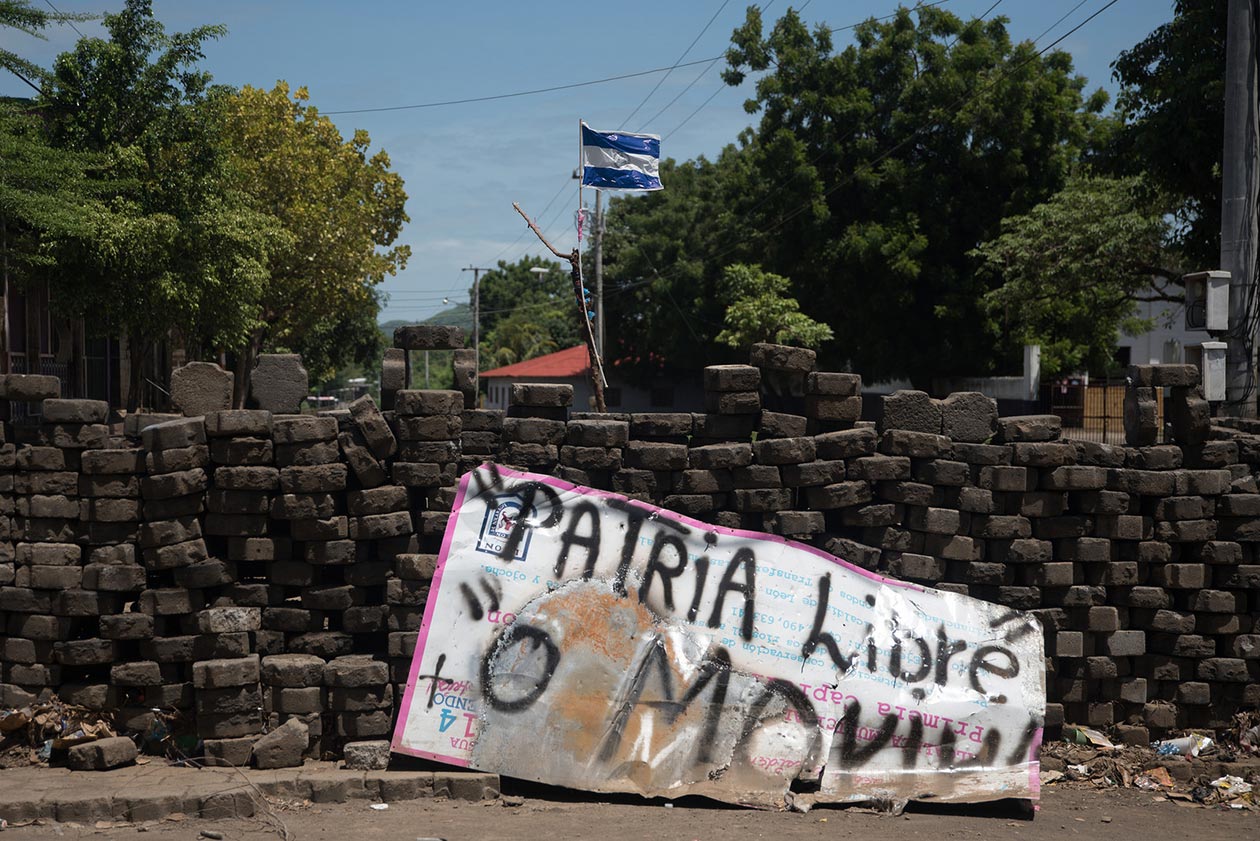
Given the abuses of Daniel Ortega’s regime against the Nicaraguan population, “the only out” left “is taking to the streets,” declared Medardo Mairena during these days of June. Mairena, a leader in the rural movement against the canal project, is now in prison.
On June 5th a number of towns around the country raised a series of barricades and called on the population to join in the protests. Leon, Carazo, Matagalpa and Rivas are some of the departments that blocked themselves off with barricades, demanding Ortega’s resignation. Days later, a group of merchants in the sprawling Eastern Market, declared themselves in “civil disobedience”.
Family burnt to death in the Carlos Marx neighborhood
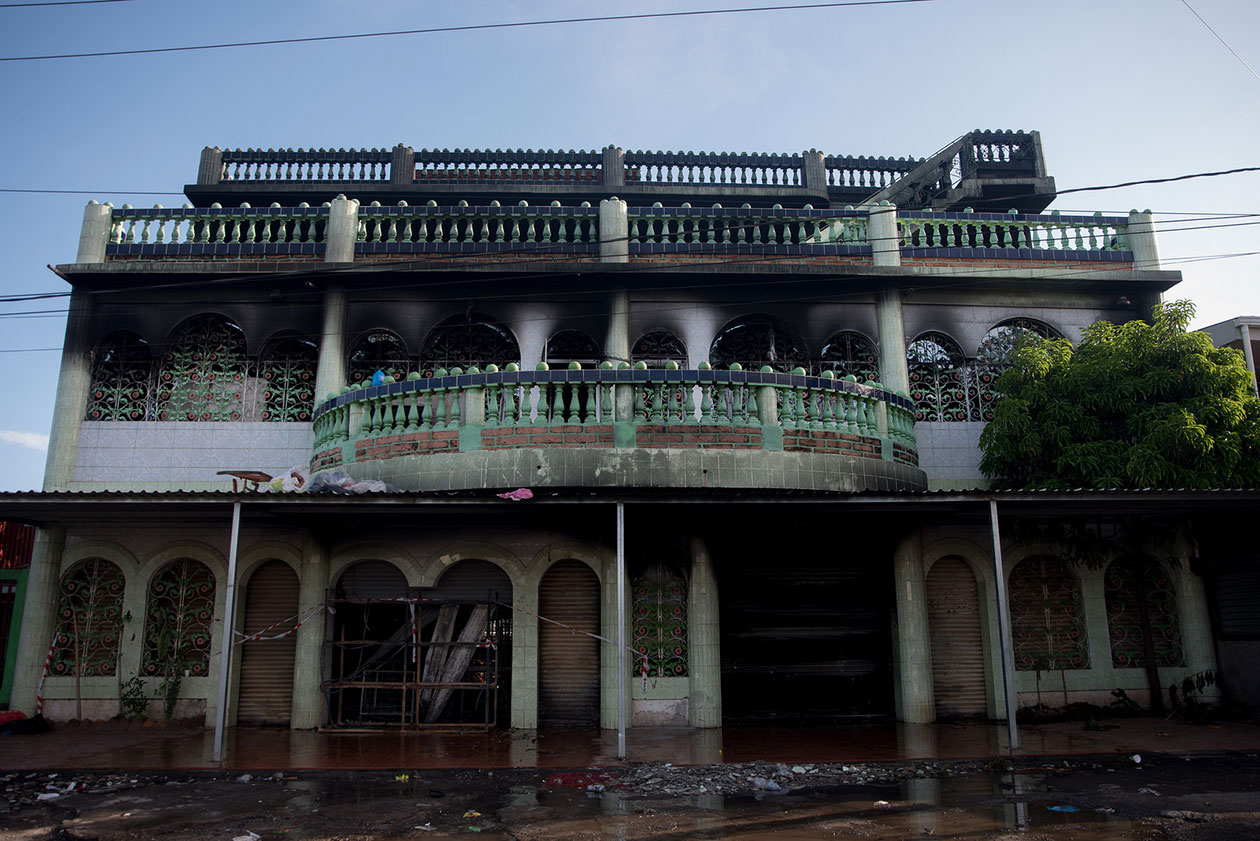
Four adults and two small children burned to death in a fire provoked by police and paramilitary. A video with the declarations of Cinthia Lopez, the family’s only survivor, went viral: amid sobs she denounced that they had burned down her home and incinerated all of her family. “They killed my parents, they set fire to them.” National and international indignation grew.
Attack on the “March of the Flowers”
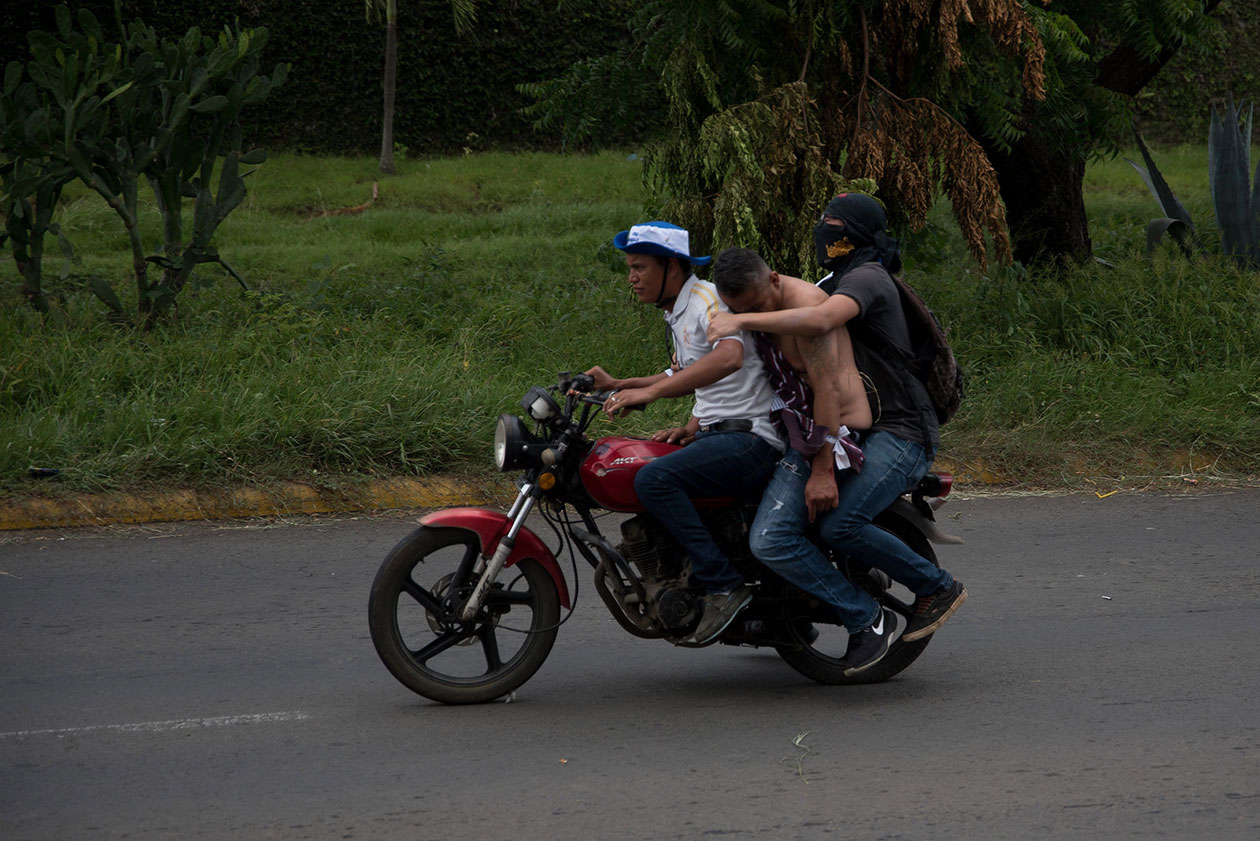
On June 30, thousands of citizens went out on the streets to participate in the “March of the Flowers”, planned to honor the memory of some 20 minors who had died as a result of the government repression. The day ended with ten receiving bullet wounds and one dead when a part of the peaceful march was attacked by gunfire.
July
Brutal clean-up operation begins
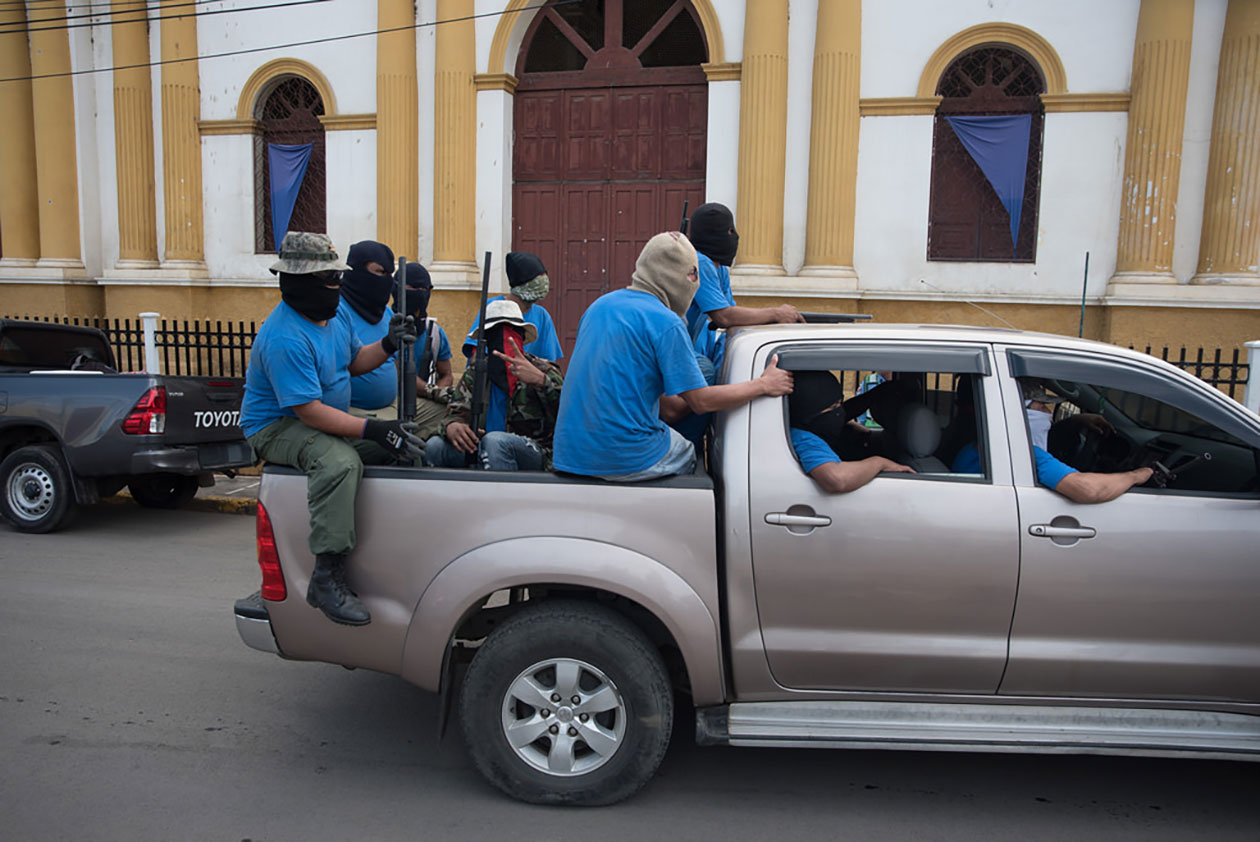
On July 3rd the regime began what they dubbed as “Operation Clean-up” in La Trinidad, Esteli. Dozens of Police and paramilitary groups dismantled the roadblocks the people had set up and attacked the demonstrators that attempted to resist them. That was just the beginning. On July 8, the barricades in Diriamba, Dolores and Jinotepe were attacked for more than ten hours. The government then cleared out hundreds of stranded truckers and unleashed a terrible witch-hunt against the population. When the noise from the flying bullets ceased, the count began of the nearly 25 dead.
On July 17, Daniel Ortega’s regime launched an armed offensive against Masaya, specifically in the indigenous neighborhood of Monimbo, which had been the epicenter of the resistance. Police commissioner Avellan declared: “The order from our president and vice president is to clean up the streets. We’re going to do that, no matter what the cost!”
The first sanctions against the government
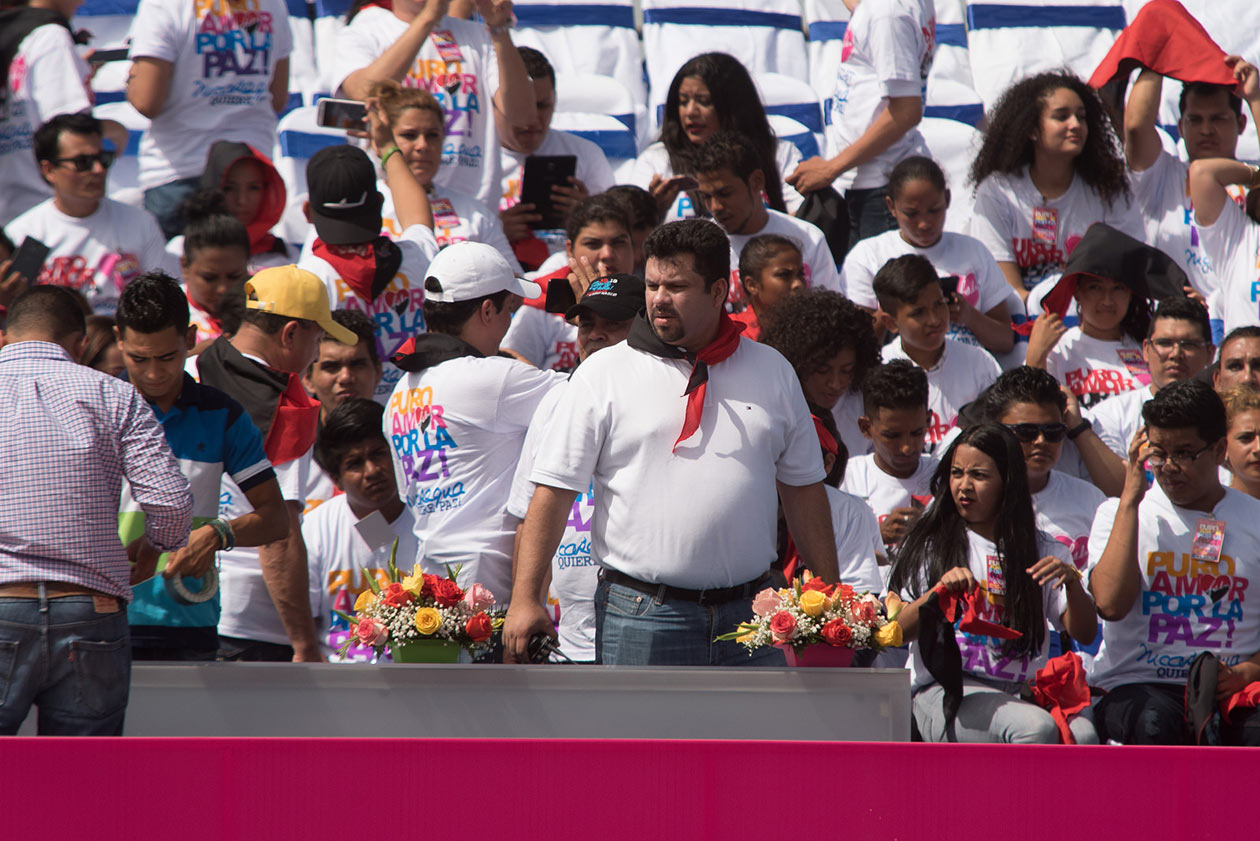
The U.S. State Department announced new sanctions imposed against three high functionaries of Daniel Ortega’s government under the Global Magnitsky Act for violations of human rights and corruption.
Sanctioned were the de facto director of the National Police, Francisco “Paco” Diaz; Fidel Moreno, secretary of the Managua Mayor’s Office, and Francisco “Chico” Lopez, vice president of Albanisa, president of Petronic and treasurer of the FSLN.
That month, the Frente Sandinista party, who hold an overwhelming majority in the National Assembly, responded by approving two anti-terrorism laws that, according to legal experts would be used as a weapon to persecute and criminalize citizens, opposition figures, large business owners and non-profit organizations that supported or donated to any civic campaign to defend themselves from the authoritarian regime of Daniel Ortega.
Bishops attacked
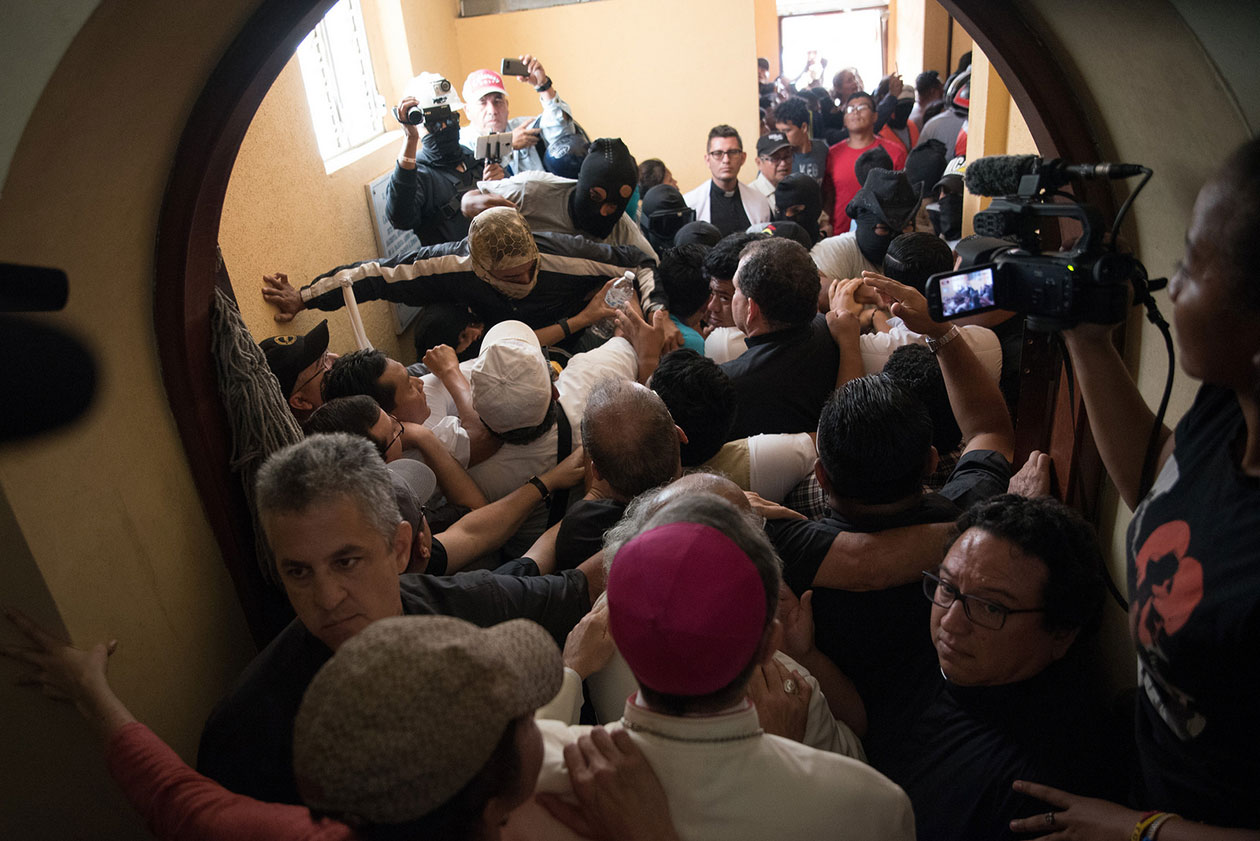
On July 9, mobs and paramilitary from the regime assaulted a number of bishops from the Catholic Church, together with human rights advocates and members of the independent press. All of them were traveling to the town of Diriamba to participate in a mission established by the religious figures to mediate the attacks being perpetrated in the department of Carazo.
The government mobs rained insults on the church leaders and accused them of being “liars and assassins”. Monsenor Silvio Baez’ right arm was wounded during the violent scene in front of the San Sebastian Basilica. Vice President Rosario Murillo, Ortega’s wife, later justified the attack as an expression of “Christianity.”
Attack on the National University
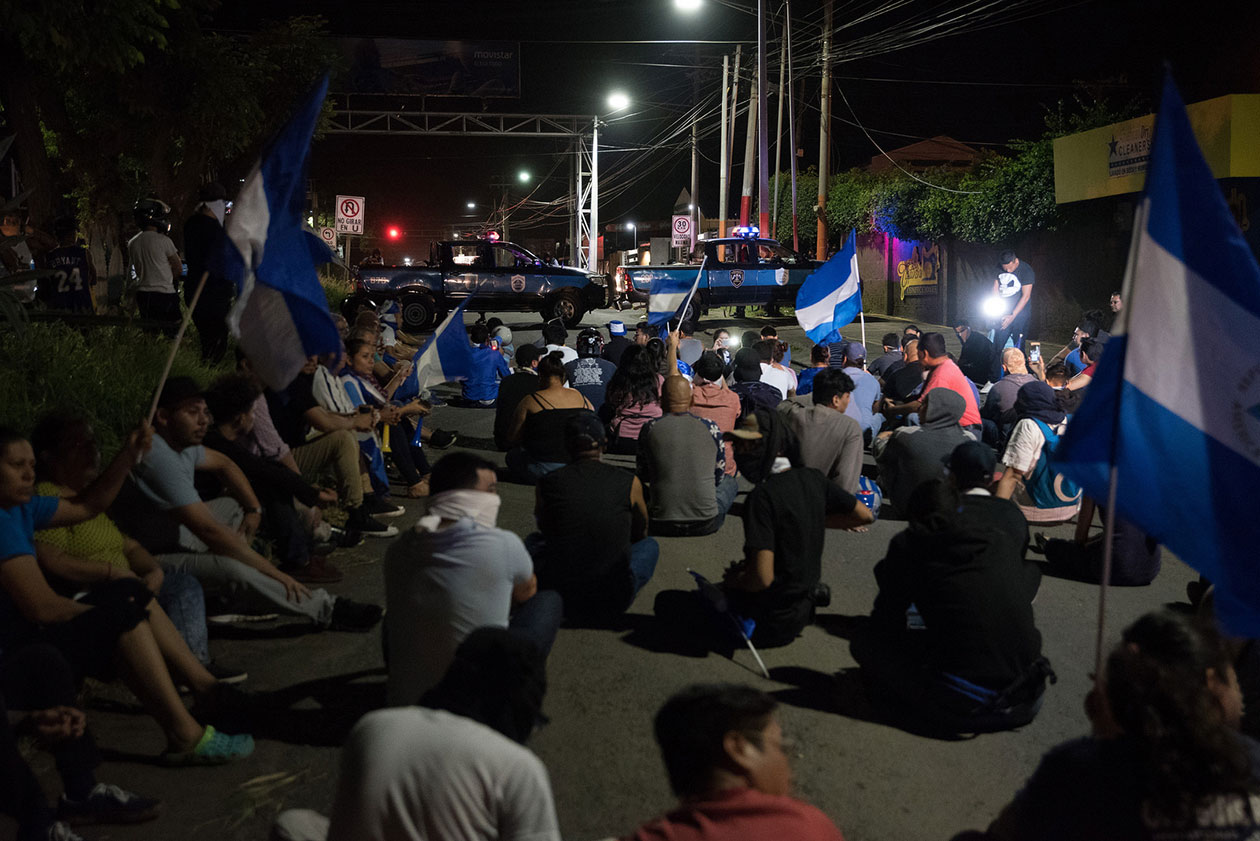
The Ortega regime launched a brutal attack on July 13, using police and paramilitary forces to dislodge the young people who had barricaded themselves into the Nicaraguan National Autonomous University (UNAN) in Managua, while they were trying to negotiate their departure from the occupied building in exchange for guarantees.
The military operation lasted over twelve hours, then continued against the Church of the Divine Mercy, where a number of students took refuge. Student Gerald Vazquez was killed by a bullet in the head, and Jose Flores, another student, was also shot and killed. An additional sixteen young people were wounded.
August
The list of political prisoners grows and thousands go out on the streets
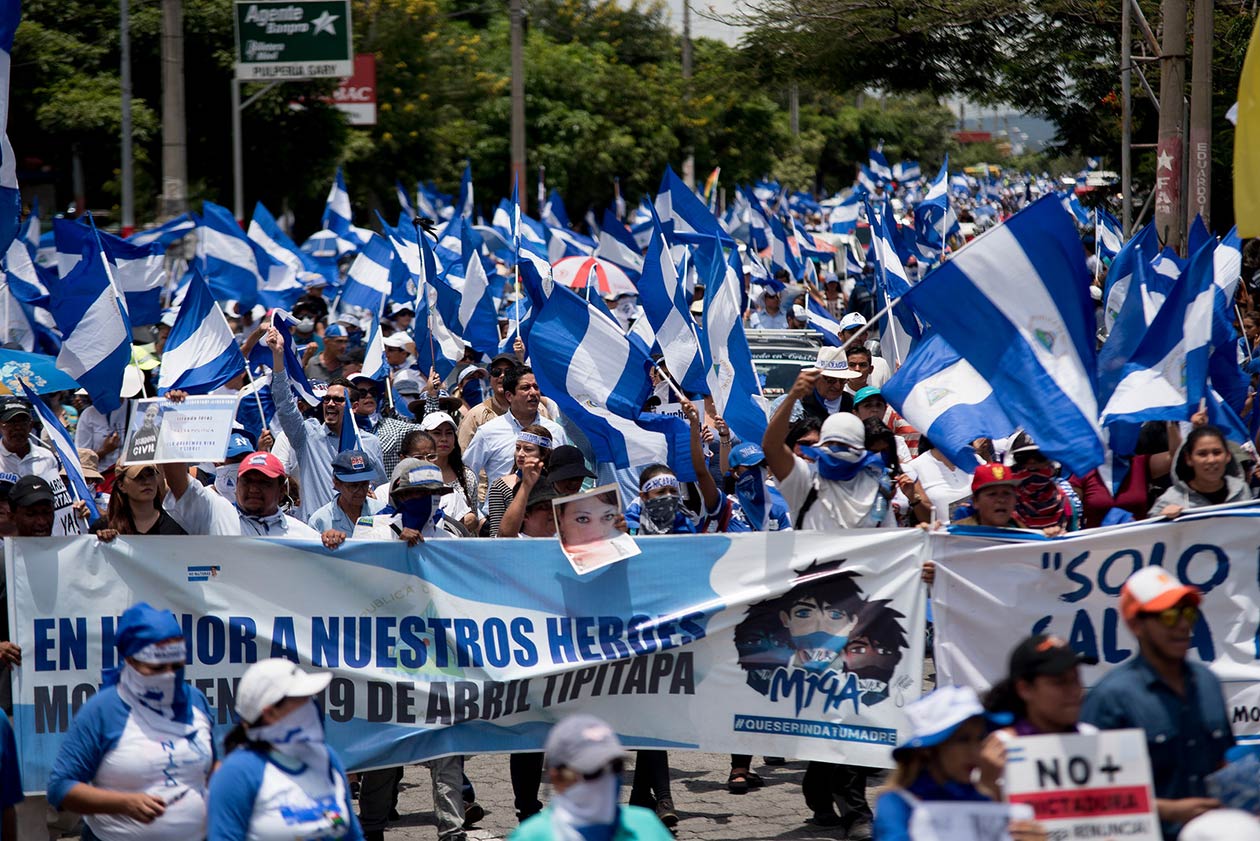
On August 12, thousands went out onto the streets to demand the liberation of the political prisoners. At that moment, the preliminary lists complied by human rights organizations estimated the number of political prisoners at over 200, the majority activists, leaders and citizens who participated in the anti-government protests.
Throughout that month there were weekly civic demonstrations called in solidarity with the political prisoners; in turn, these marches were encircled by the National Police and paramilitary groups. Today, according to the Nicaraguan Center for Human Rights, the list of political prisoners has reached 565.
First political prisoners declared guilty
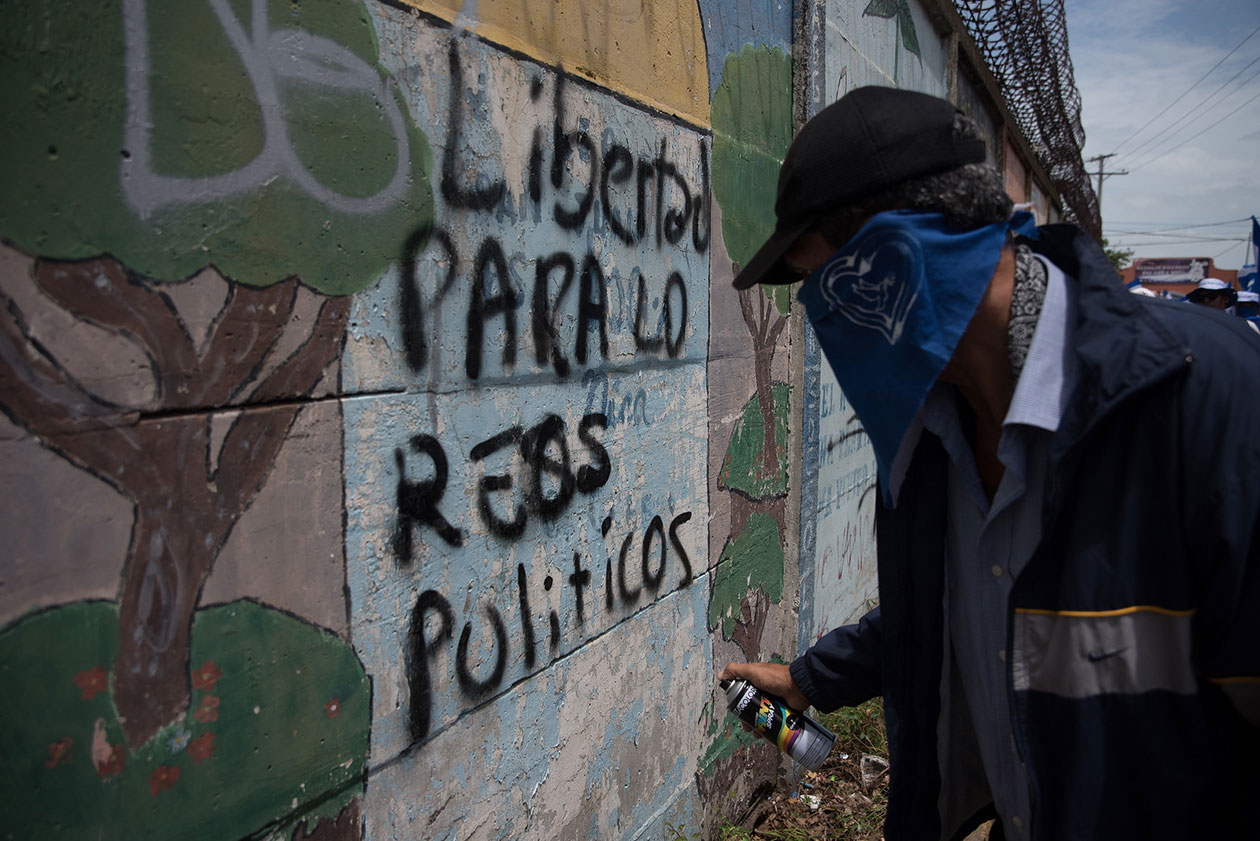
On August 28, two young people – Brandon Lovo and Glan Slate – were declared guilty, thus becoming the first political prisoners to be processed by the Ortega government. The youth were accused of the murder of journalist Angel Gahona, shot while he was covering a protest in Bluefields. The Prosecutor’s office demanded the maximum sentence for each crime they were accused of, although there was no definitive evidence of their guilt.
The defense lawyers pointed out a series of inconsistencies in the case of the two youth, who were also the first public faces of the struggle for the liberation of the political prisoners.
Massive round-up of demonstrators
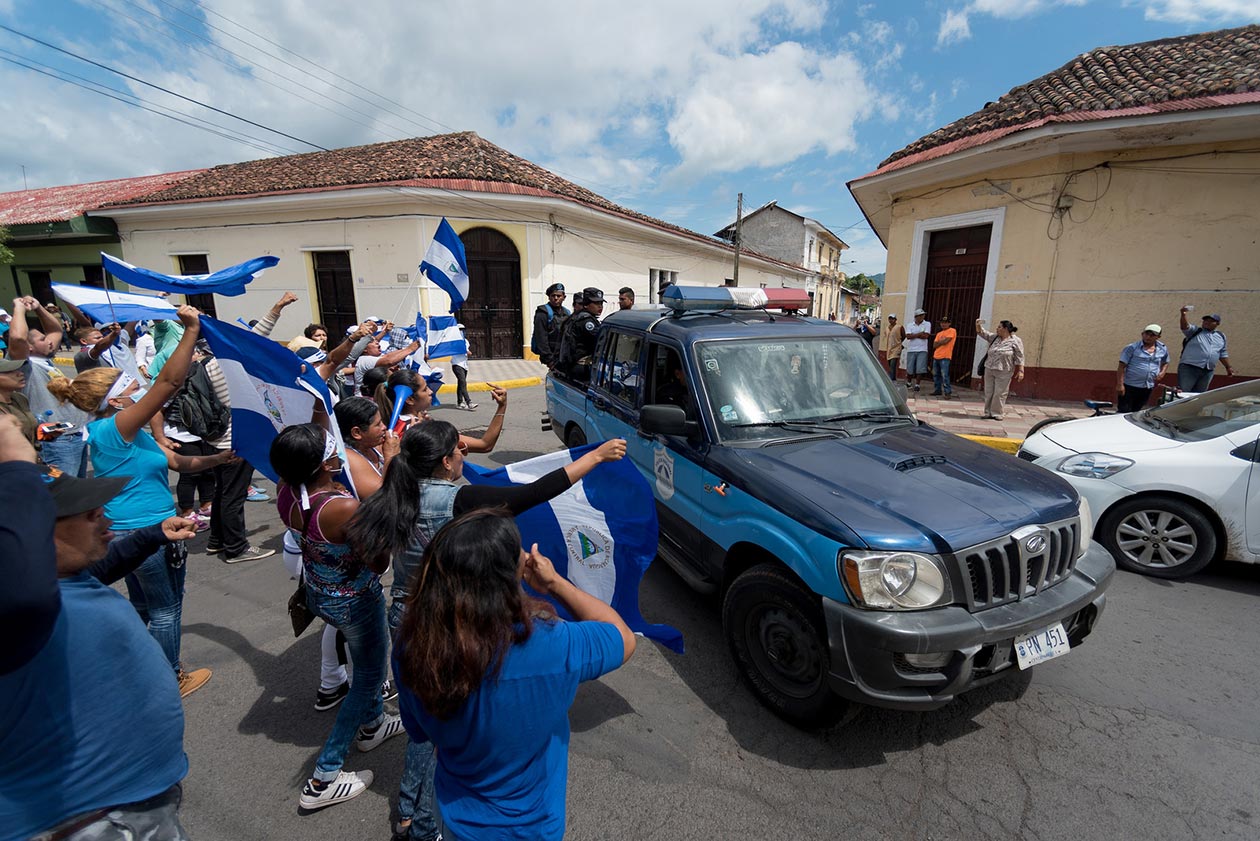
Police and members of the paramilitary attacked a “blue and white” caravan in Granada. Simultaneously, some 20 members of the University Coordinator for Democracy and Justice were captured by the National Police in Carazo. Hours later, they were freed because of citizens’ pressure, following negotiations with human rights advocates.
It later became known that in the city of Leon, six university students were detained while they were heading to a march there. These six are currently accused of terrorism, illegal arms possession and of being responsible for a fire in the University Center of the National University, in which one student died.
Ortega expels the UN mission from Nicaragua
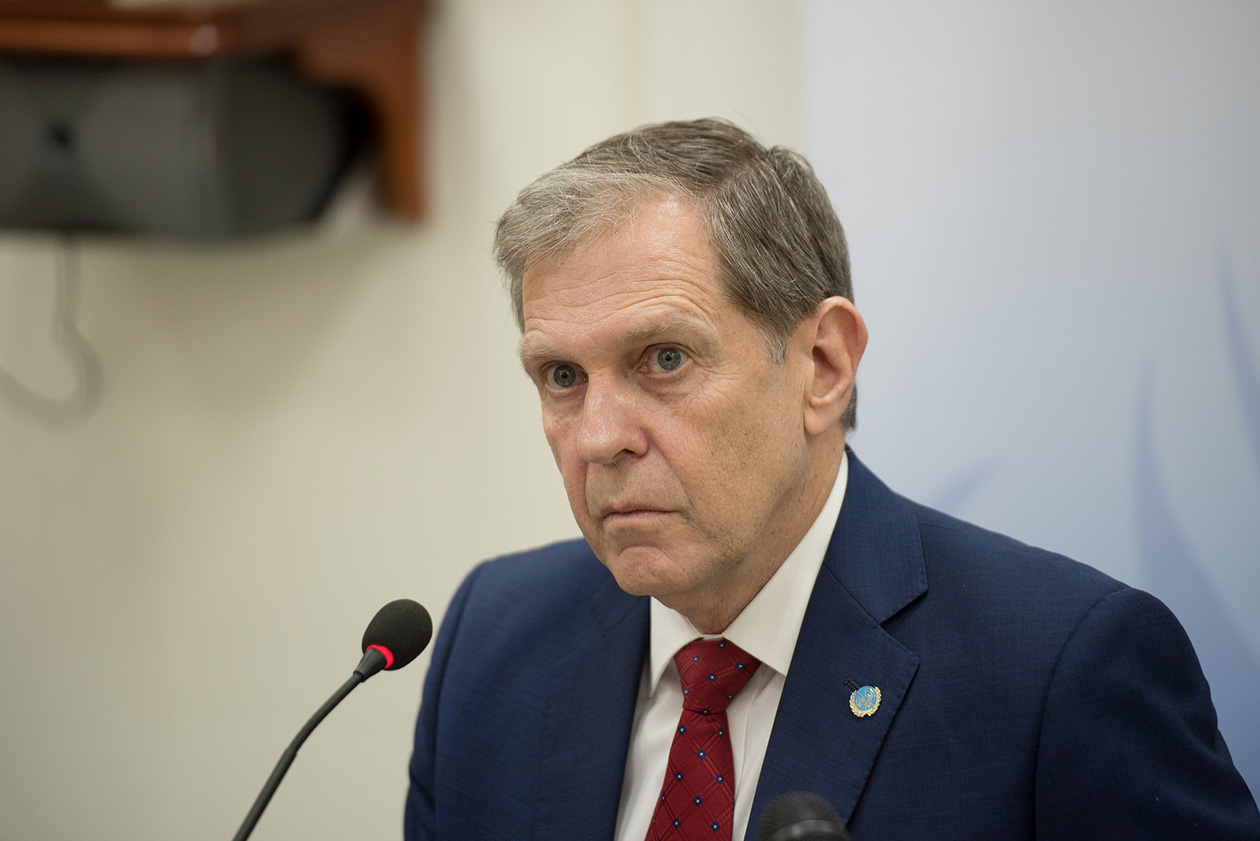
On August 31, Daniel Ortega’s government expelled the mission of the UN High Commissioner for Human Rights that was in the country to monitor the human rights situation.
The mission had arrived on June 26 to accompany the Truth and Security Commission of the National Dialogue. That week, the Office of the High Commissioner published a scathing report on the human rights violations that had occurred in the country within the context of the demonstrations and corresponding government repression.
Said report detailed the use of “lethal force” and the presence of paramilitary groups, all used against the “non-lethal threats of Nicaraguans that were protesting in a civic manner.
September
Third national strike for the political prisoners
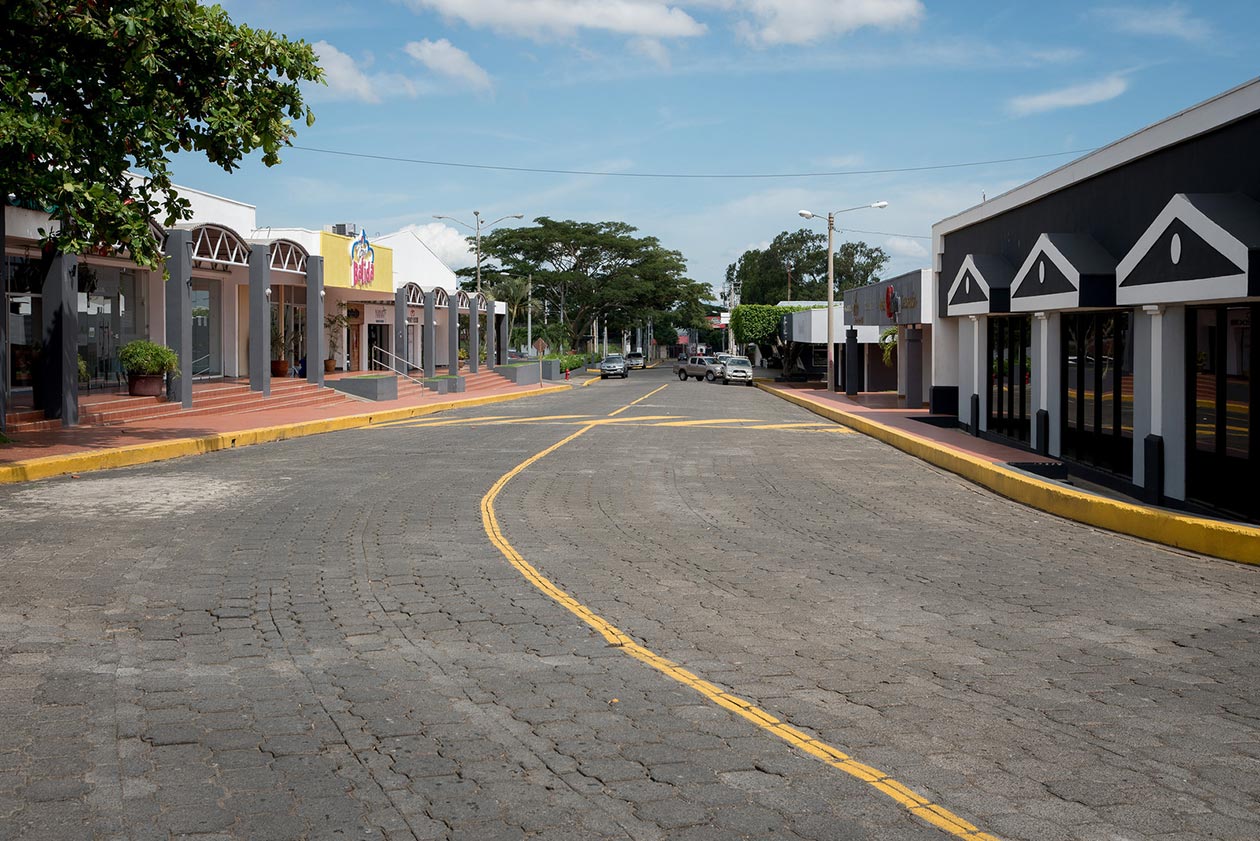
On September 7th the third 24-hour national strike was called by the Civic Alliance to demand the release of the political prisoners. In different departments of the country, the majority of the gas stations, supermarkets, banks and shopping centers joined in on the call from the private sector.
The capital awoke that morning in a state of partial paralysis and with a large police presence. Nonetheless, the public transport sector decided not to join the strike. This was the last strike to be called for by the business sector in eight months of citizen protests.
Medical personnel fired
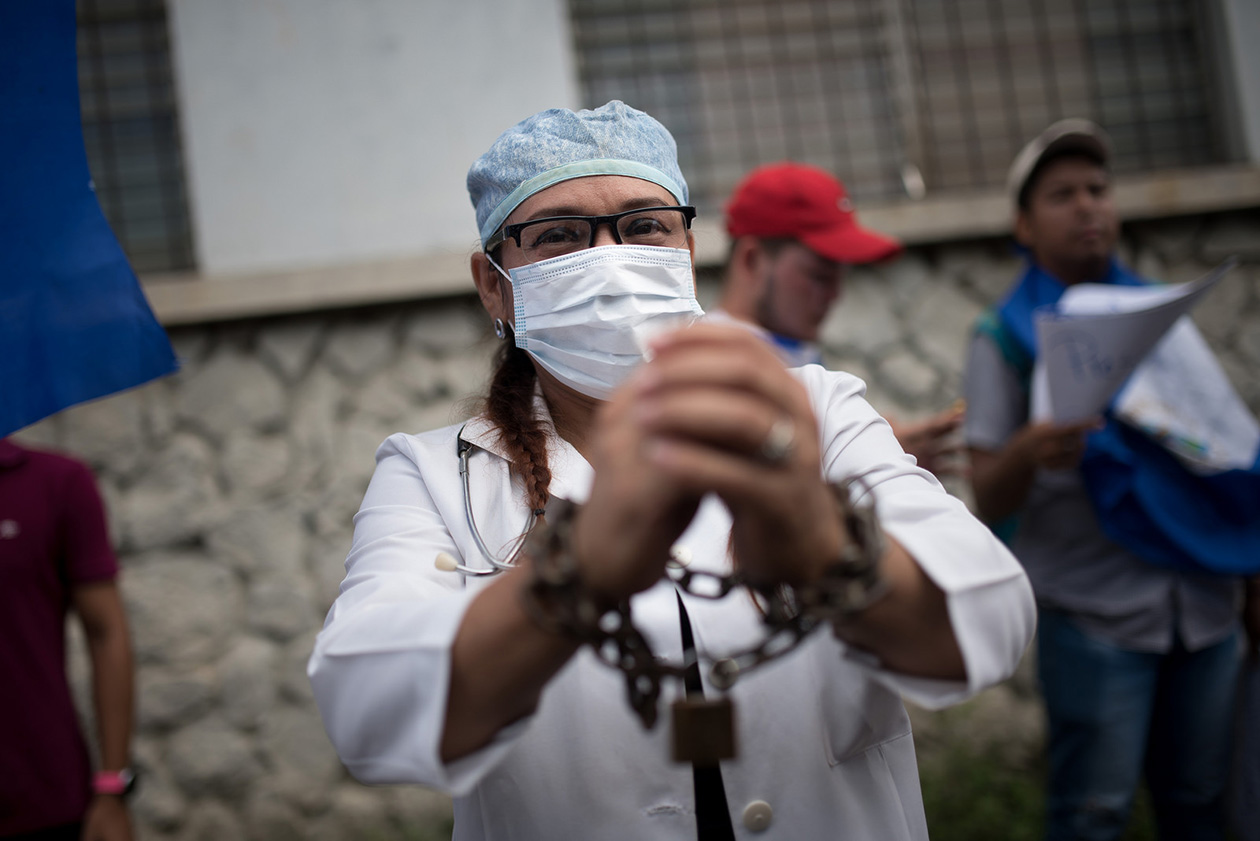
The Ortega regime retaliated against the humanitarian doctors who attended the wounded protestors. The administration of a number of hospitals in different cities fired several dozen doctors “for political reasons”.
The group of doctors complained to the Permanent Human Rights Commission that they had been relieved of their duties under a series of false accusations: “charging for consultations, abandoning their shifts, inappropriate clothing”.
In addition to doctors and nurses, the regime began firing faculty and state workers who had supported the protests against Ortega and Murillo. The massive dismissal of medical personnel continued over the next months.
Matt Romero, victim #325 of the repression
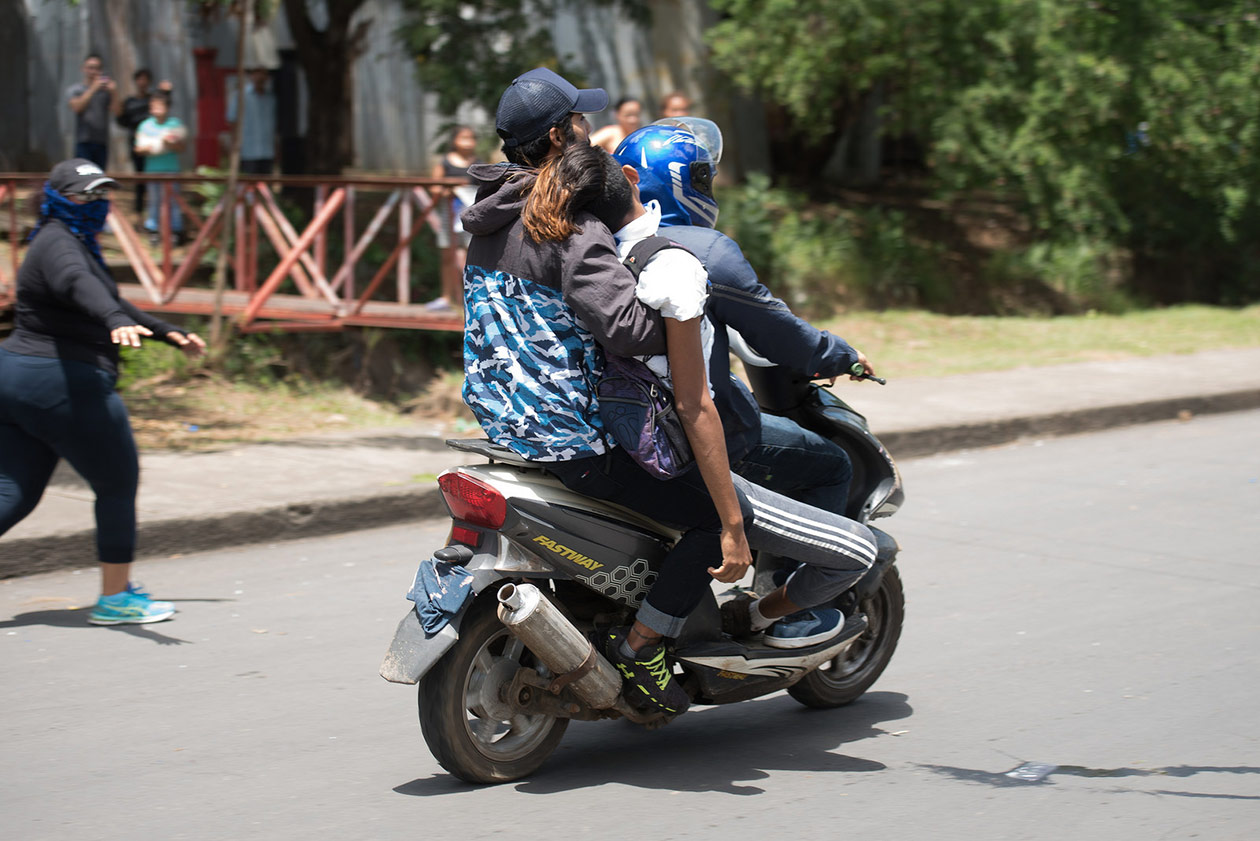
The march “We’re the voice of the political prisoners”, held on September 23, was attacked by paramilitary and government sympathizers. In the attack, Matt Romero, a 16 year-old high school junior, became the 325th victim of the repression when the demonstrators attempted to respond with stones and homemade mortars to the police attack. At least five others were wounded, among them journalists.
Anti-government marches declared “illegal”
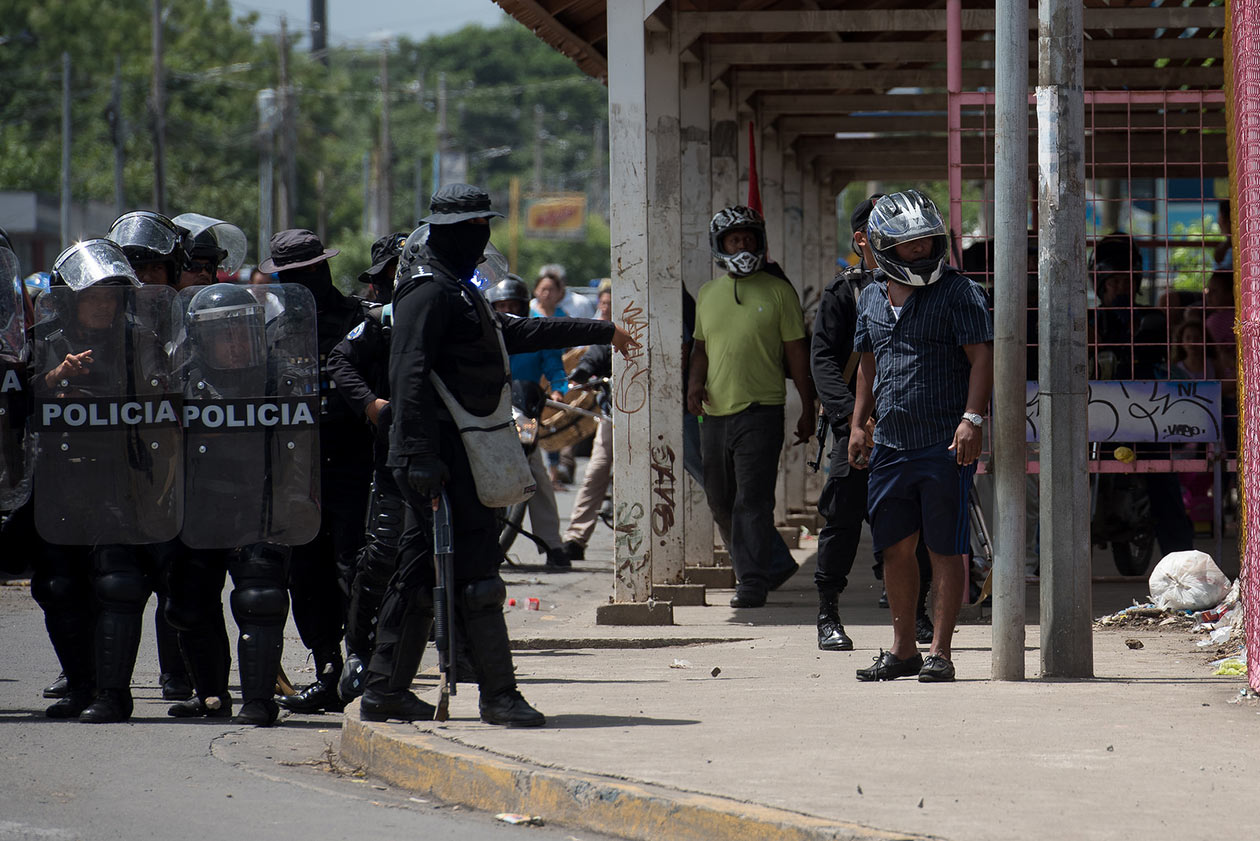
On September 29, via a police order that threatened to criminally process people and organizations that call for demonstrations, all protests were declared “illegal”. The order occurred the night before a march had been called under the slogan “We have no president”.
In a communique, the Police placed responsibility for the deaths occurred that month on the movements that convoked the marches. This has been one of the latest resources used, together with the massive imprisoning of dissidents, to silence all demonstrations against Daniel Ortega and Rosario Murillo.
October
National Blue and White Unity Movement created
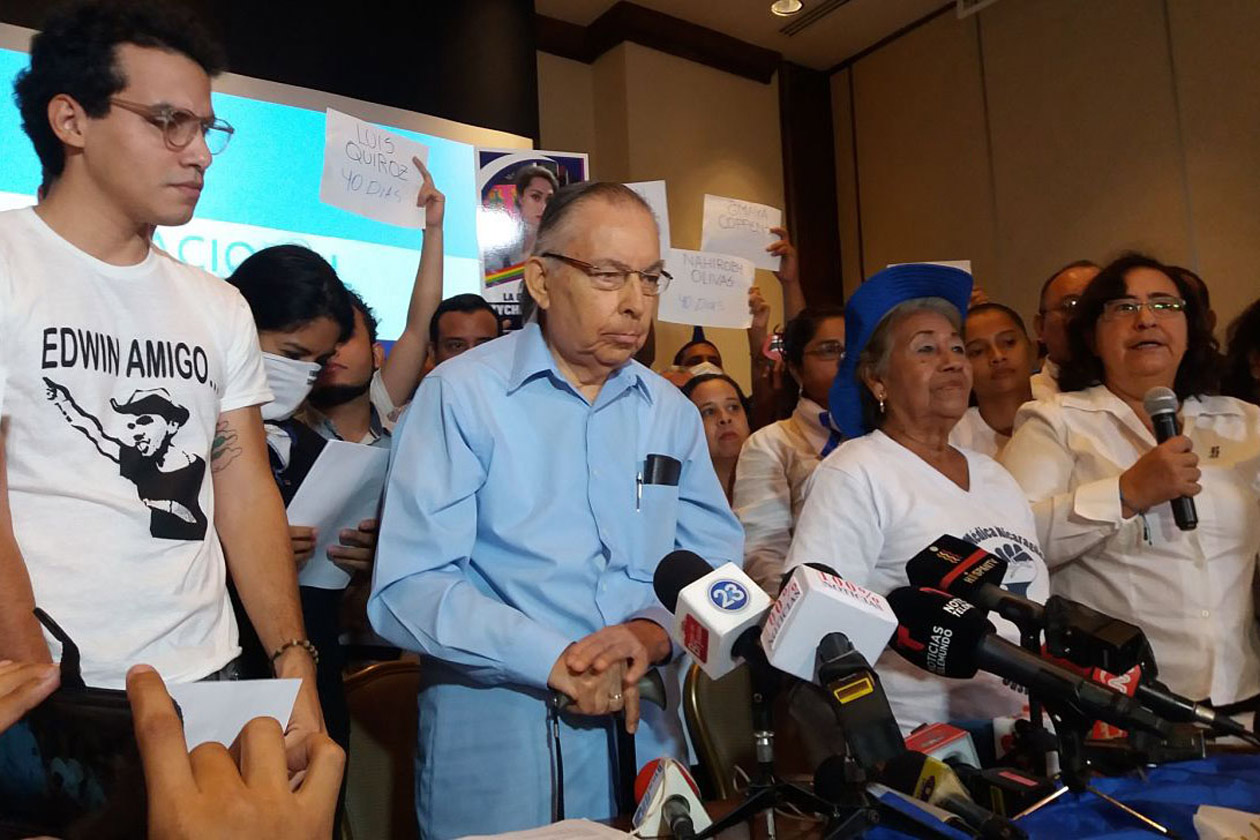
On October 4, business leaders, university students, human rights activists, farmers, political leaders, feminists and movements from all over the country formed the National Blue and White Unity Movement, to combat the dictatorship of Daniel Ortega and Rosario Murillo. Among the representatives of this new movement were members of the Civic Alliance for Justice and Democracy, the University Coalition, Feminist Umbrella, LGBTQI National Table, and others.
Within this unity movement are 43 organizations that have placed their bets on the reinstallation of the National Dialogue to forge agreements on a democratic transition. Among actions they have taken are consumer strikes, dressing in white, and flash mobs in commercial centers.
A new exodus of Nicaraguans
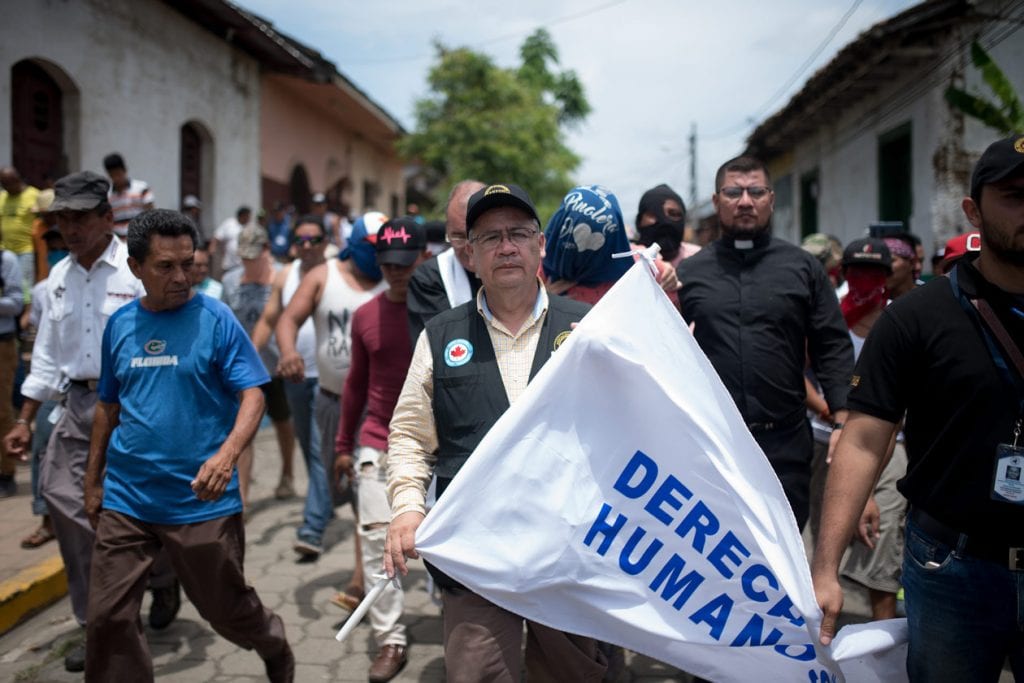
Due to the intense persecution that important leaders of the peaceful revolution have suffered since April 18, figures like the leader of the Farmers’ Movement Francisca Ramirez, Monica Baltodano Lopez, and human rights defender Alvaro Leiva have had to exile themselves in Costa Rica.
The first person conceded political asylum in Costa Rica was Alvaro Leiva, executive secretary of the Nicaraguan Association for Human Rights. Leiva fled Nicaragua in August, after denouncing harassment from armed groups and death threats sent to his offices. Although he was the first to receive official political asylum, he joined thousands of Nicaraguans, many of them students, who had fled the country due to persecution from the dictatorship.
Thirty-eight people detained during a demonstration in Managua
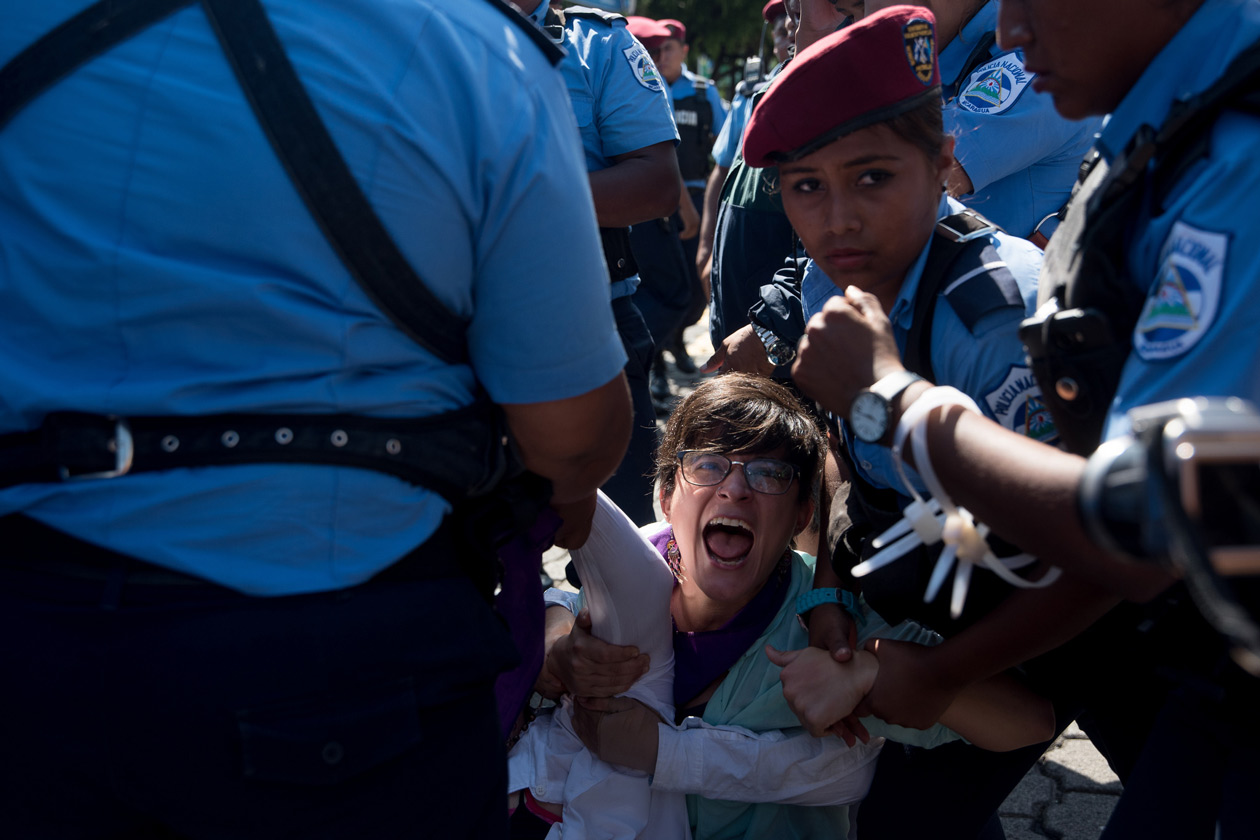
Riot police abducted 38 persons on October 14, out of a group of no more than fifty people who had gathered in the place where the protests had begun eight months previously.
Among those detained was Jose Dolores Blandino, father of the former Miss Nicaragua. Blandino, Ana Lucia Davila from the feminist movement and Suyen Barahona and Ana Margarita Vijil, members of the Sandinista Renewal Movement. All but one were released the next day.
Political prisoners beaten

Family members of the political prisoners informed the media that on October 26 a group of at least 20 men armed with truncheons entered the women’s prison known as La Esperanza to transfer Irlanda Jerez, a leader of the protesting market venders. When the other political prisoners opposed this move, they were beaten.
Following this incident of aggression against the imprisoned women, a delegation from the Inter-American Commission for Human Rights’ Special Follow-up Mission for Nicaragua and members of the Permanent Commission for Human Rights requested permission to enter the prison to corroborate the health status of the political prisoners, but were denied access.
November
Cemeteries militarized on the Day of the Dead
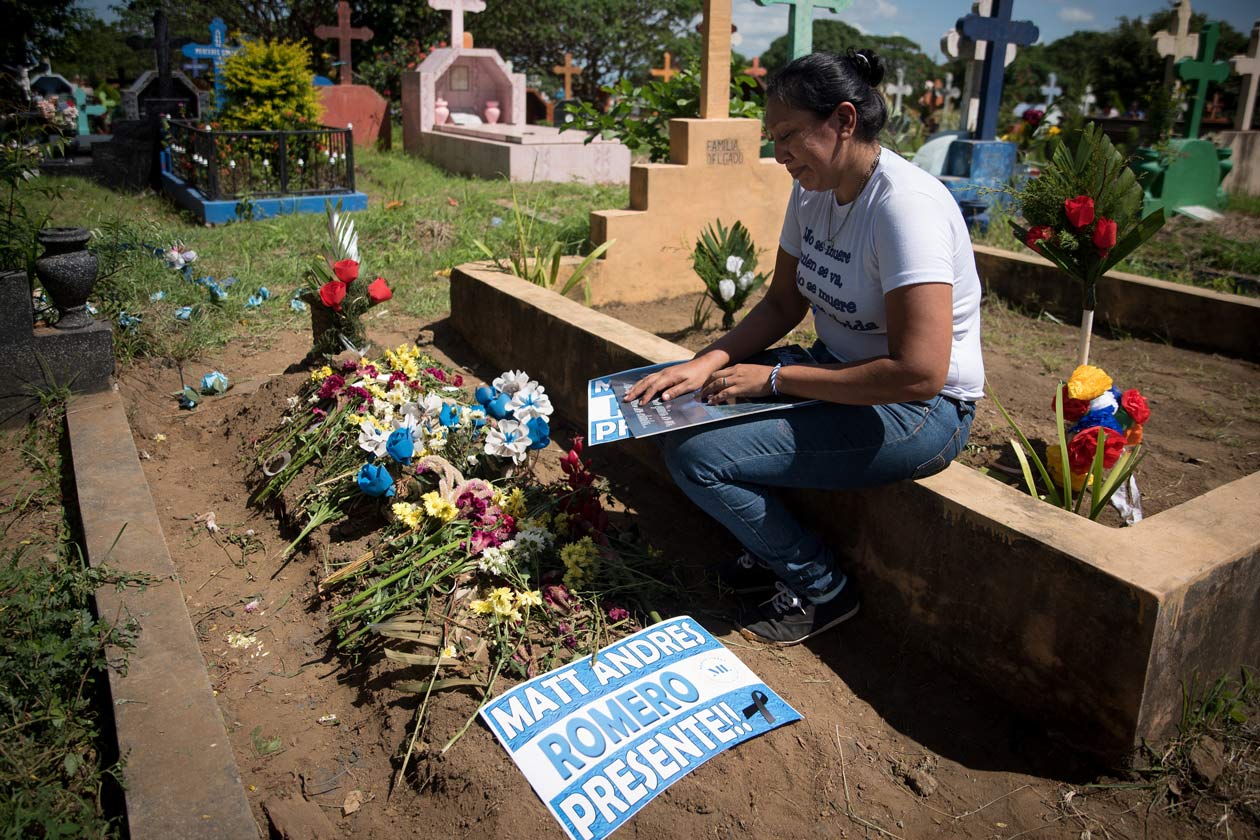
The presence of police in cemeteries all over the country alarmed Nicaraguans who had arrived to leave flowers on the graves of their deceased family members. The “God’s Miracle” [Milagro de Dios] cemetery, where some of those killed at the hands of Daniel Ortega’s regime were buried, was blanketed in blue and white helium balloons in remembrance of those killed.
Those present in that cemetery were witnesses to the fifth arrest of marathon runner Alex Vanegas, who remains in jail despite a judicial order for his release.
Police presence in the shopping malls

Following the opposition initiative of convoking flash protest mobs in the Managua shopping malls to demand the liberation of all the political prisoners, dozens of National Police agents were dispatched to those private business spaces, allegedly to provide security for the payment of the yearly Christmas bonuses to employees.
During the “Special Security Plan” of the police, two citizens were arrested at the Galerias Sando Domingo mall. The shopping center’s administration affirmed in a statement that they hadn’t requested thej police presence and that such actions hadn’t been taken “with the consent of the proprietors and of the administration” of the mall.
Permission denied for peaceful marches
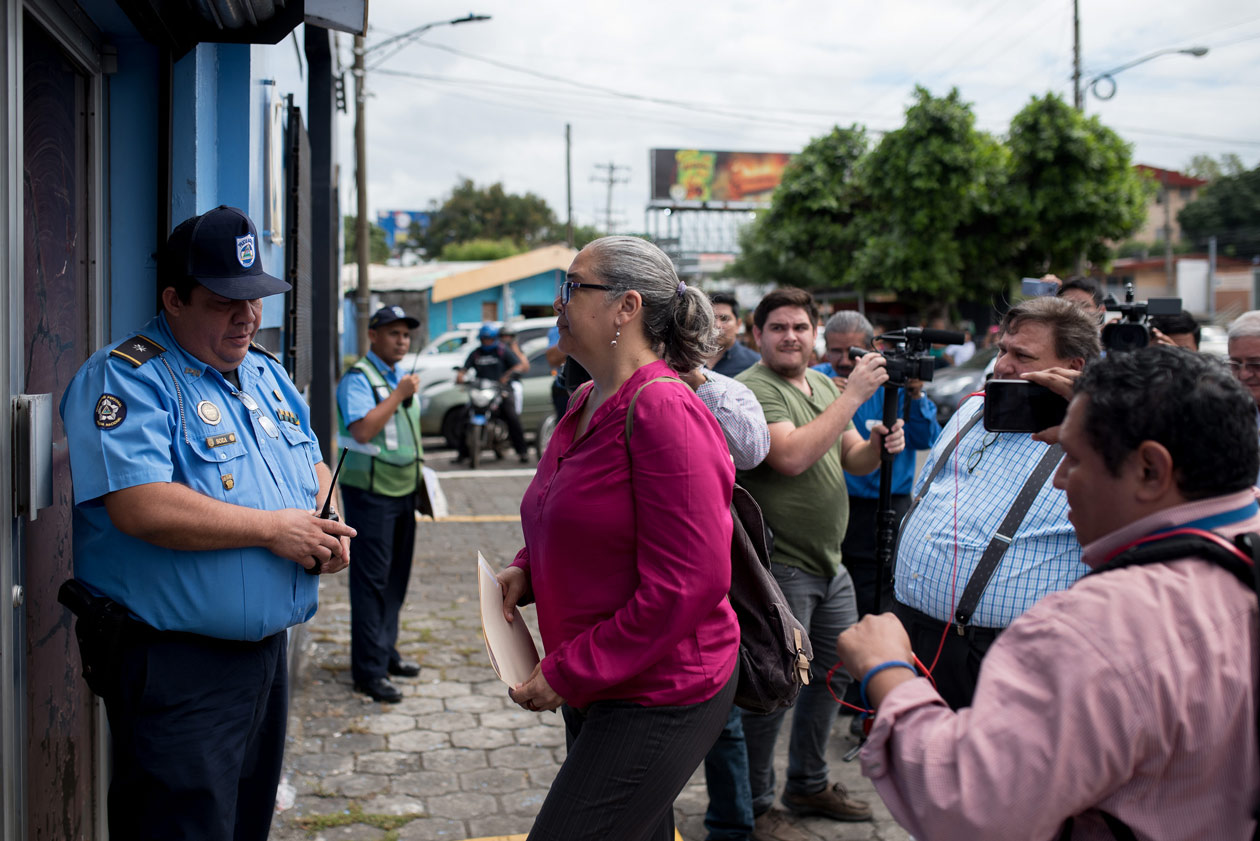
On November 24, permission for a peaceful march was denied to the National Blue and White Unity Movement and to feminist groups who followed the formal protocol for requesting permission to march peacefully through the streets of the capital.
The police made it clear that “they aren’t authorizing, nor will they authorize, public mobilizations convoked by people linked to what they call ‘coup mongers’”.
Rosario Murillo sanctioned
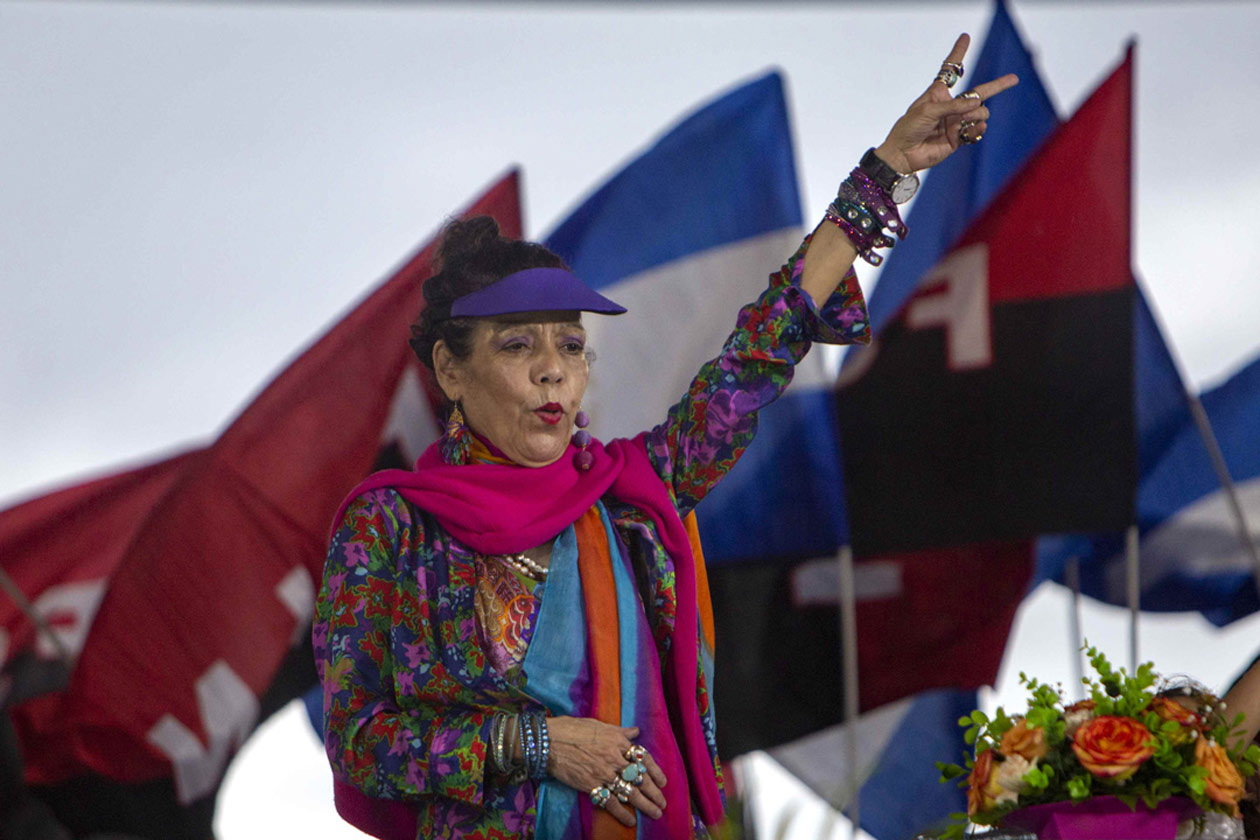
The month of November ended with sanctions imposed by the United States Office of Foreign Assets Control against Vice President Rosario Murillo and against Nelson Moncada Lau, a collaborator close to the presidential couple. At the same time, the US president termed the actual crisis in Nicaragua “an extraordinary and unusual threat to national security.”
Under the sanctions, Murillo and Moncada are barred from entering the United States and from transactions with US companies or citizens.
December
NGOs raided and persecuted
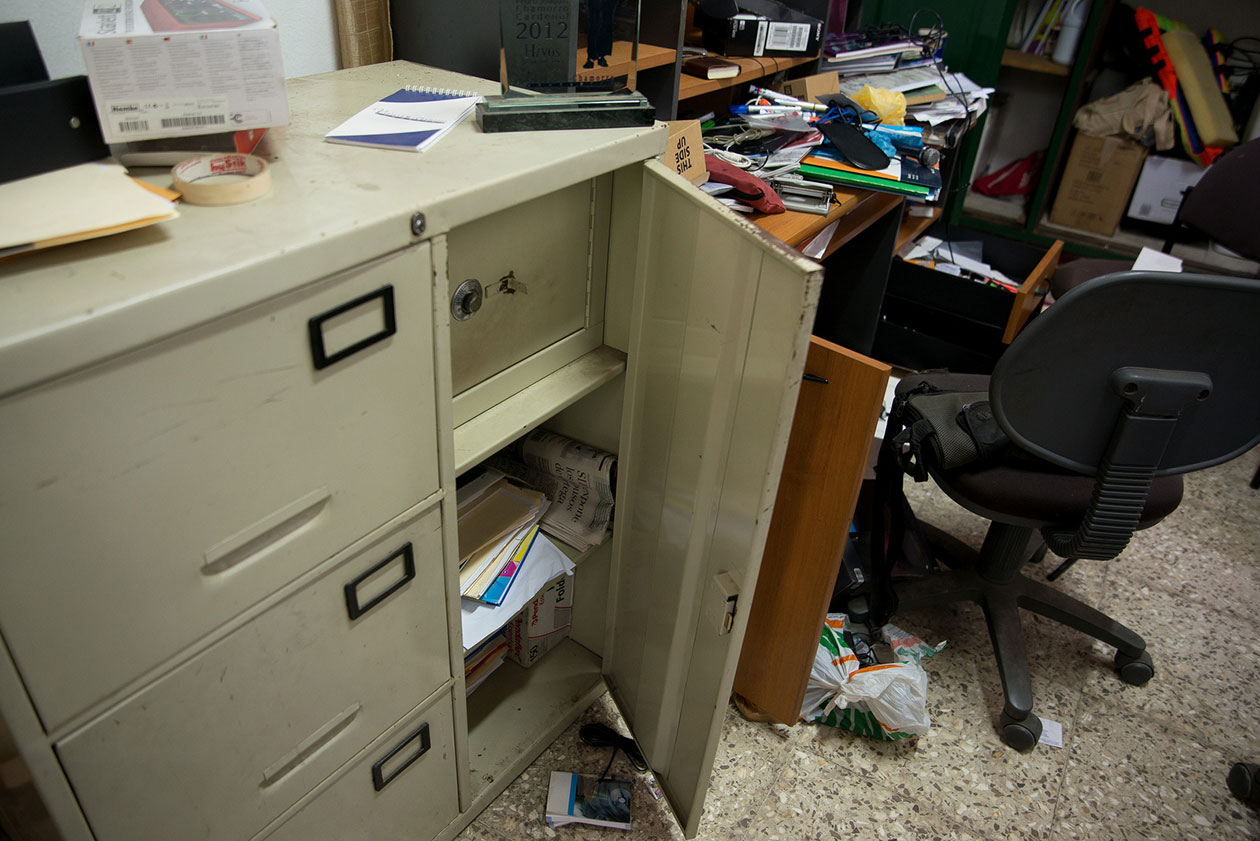
The Ortega steamroller in the National Assembly cancelled the legal status of nine non-profit organizations and ransacked the offices of several of them. The nine were: The Institute of Strategic Studies and Public Policies (Ieepp), the Center for Information and Health Advisory Services (Cisas), the Hagamos Democracia [Let’s Make Democracy] organization, the Communications Research Center (Cinco), the Popul Na Foundation, the Institute for Development and Democracy (Ipade), the River Foundation, the Leadership Institute of the Segovias and the Nicaraguan Center for Human Rights (Cenidh).
International human rights organizations and a number of countries in Latin America and Europe condemned the closure of citizen-run spaces on the part of the Ortega-Murillo dictatorship.
Attack on the independent media
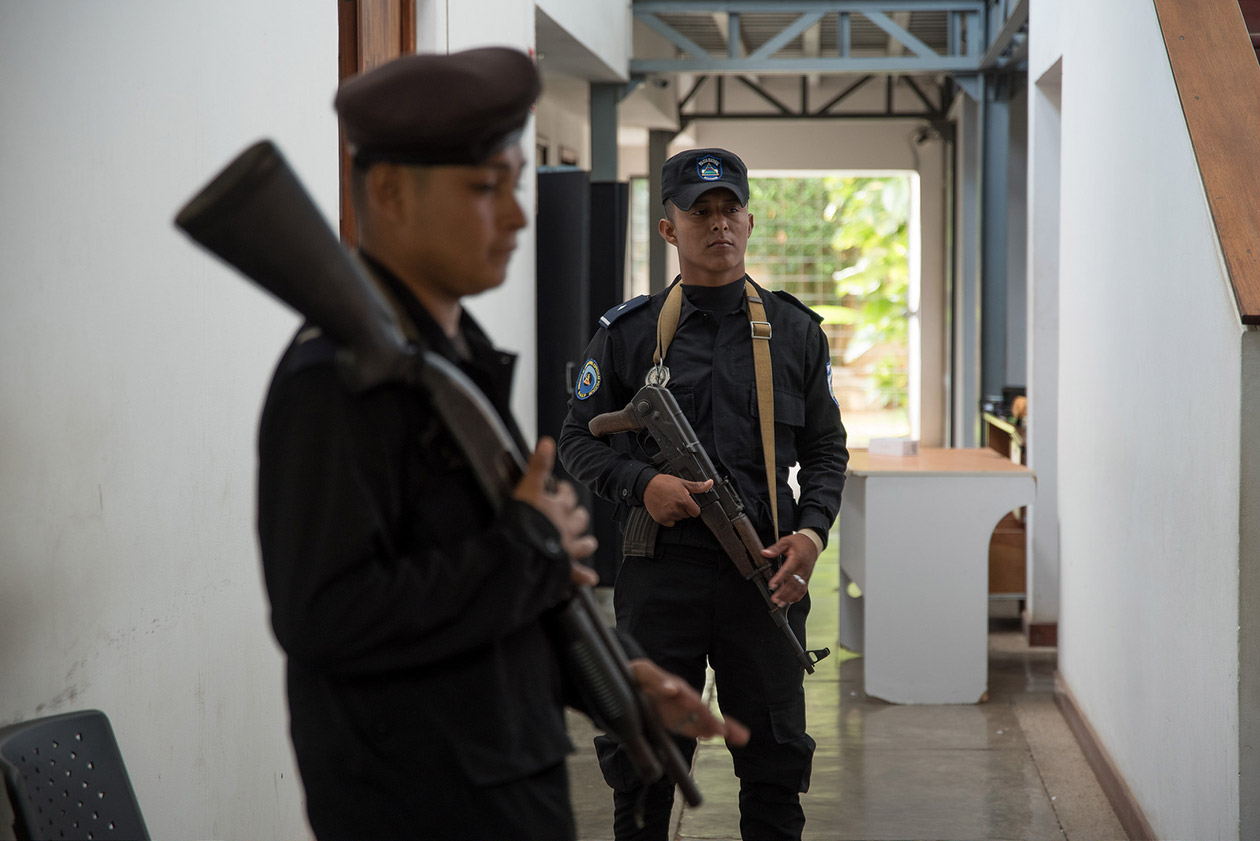
Less than 24 hours after a violent police assault and looting of the companies that produce Confidencial, the television programs Esta Semana [“This week”] and Esta Noche [“Tonight”], and the web magazine Niu, the National Police entered and occupied the installations on December 14, ordering the withdrawal of the private security guards. The police then installed a half-dozen armed officials in the building, where they remain up through today with no explanation offered.
Carlos Fernando Chamorro, director of these media outlets, together with the team of journalists presented an appeal on the grounds of unconstitutionality and denounced this assault on the independent media. During one of the public denunciations, they were assailed and struck by dozens of riot police. The event provoked a wave of international solidarity condemning the closure of independent voices.
A week later, the police ordered the closure of the television channel 100% Noticias [100% News]. They also occupied these installations and abducted their director Miguel Mora and his news director Lucia Pineda Ubau. Both are now being legally processed for the fabricated crimes of “fomenting hatred and violence”. The Ortega justice department also emitted an order for the arrest of journalists Luis Galeano and Jackson Orozco, and of columnist Jaime Arellano. The latter three have had to leave the country to protect themselves from the Ortega persecution. The news channel that formerly transmitted 24 hours a day remains closed and its installations shuttered by sheets of zinc while police remain on guard outside the site.
Interdisciplinary Group of Independent Experts (GIEI) and Special Follow-up Mechanism for Nicaragua (Meseni) Expelled
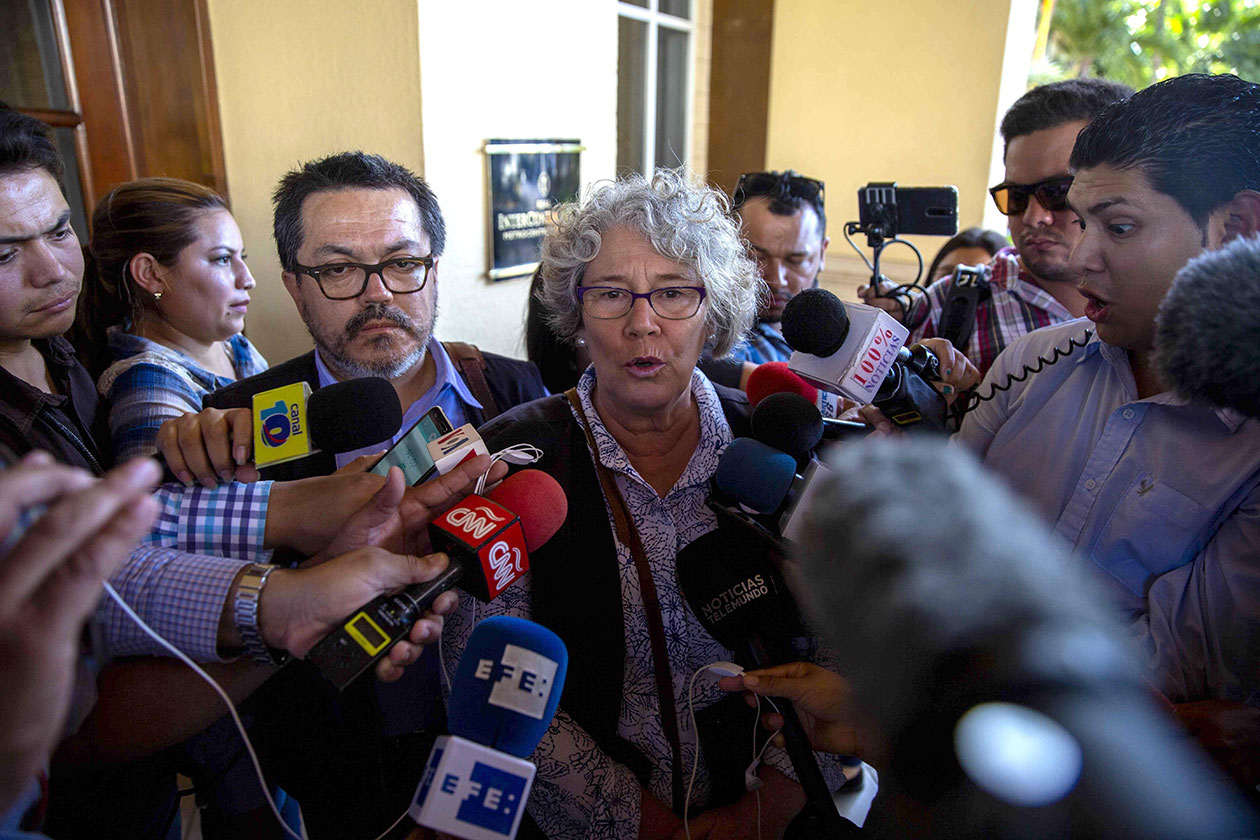
The dictatorship expelled from Nicaragua two groups that had been installed by the Inter-American Commission for Human Rights to investigate the massacres that occurred during the protests: the Special Follow-up Mechanism for Nicaragua (Meseni) and the Interdisciplinary Group of Independent Experts ( GIEI). Meseni was expelled just one day before they were to present in Managua their final report on the Nicaraguan crisis.
“Meseni will continue to function from our home site,” the organization’s executive secretary, Paulo Abrao, assured on Twitter. He shared a statement from the institution regretting President Daniel Ortega’s announcement of the group’s expulsion. In addition to the departure of Meseni, the dictatorship communicated that the “deadline, objectives and mission” of the GIEI had also expired and ordered them to leave.
Trump approves the Nica Act
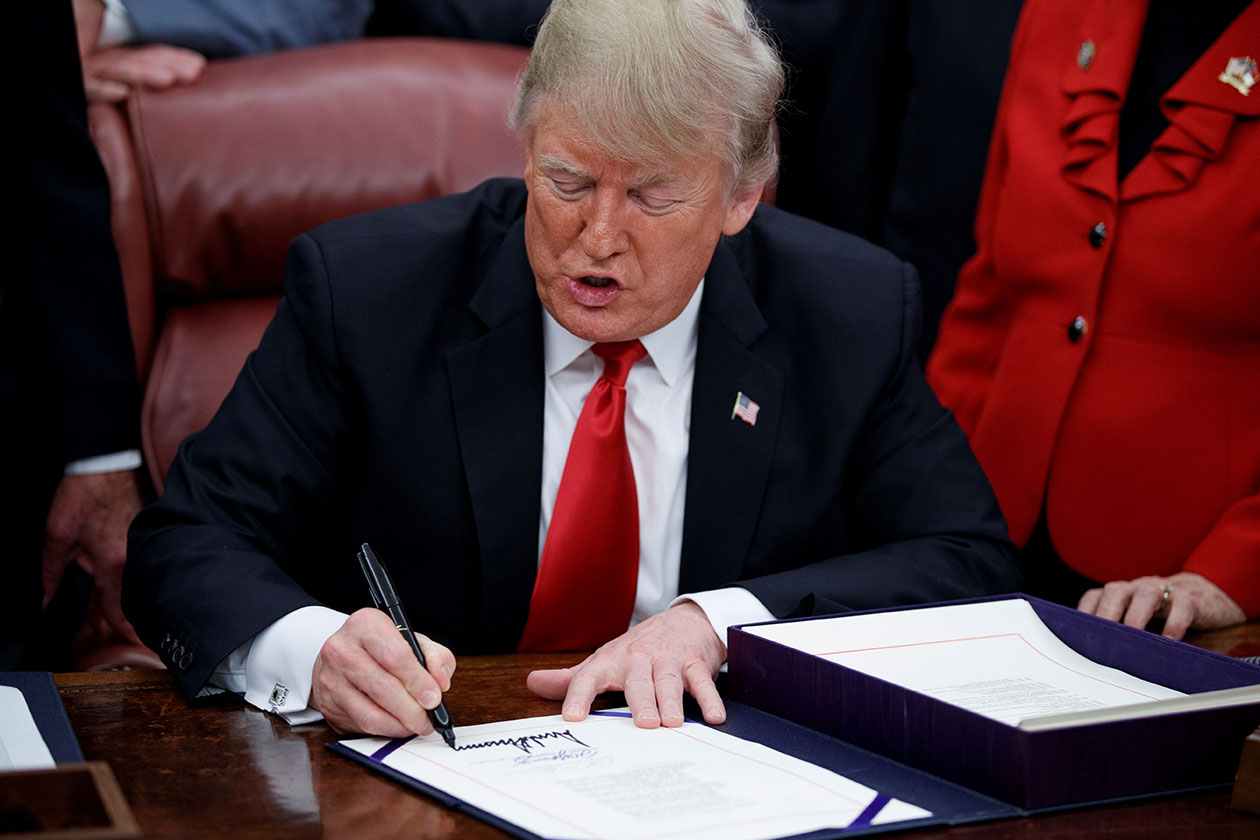
On December 20, US president Donald Trump signed the Nica Act which establishes severe political and economic sanctions against the regime of Daniel Ortega and Rosario Murillo.
With Trump’s signature, the legislation enters into effect, bringing individual sanctions to important figures of the regime as well as putting strict conditions on any loans to the government on the part of international financial institutions such as the World Bank, the International Monetary Fund and the Inter-American Development Bank.
